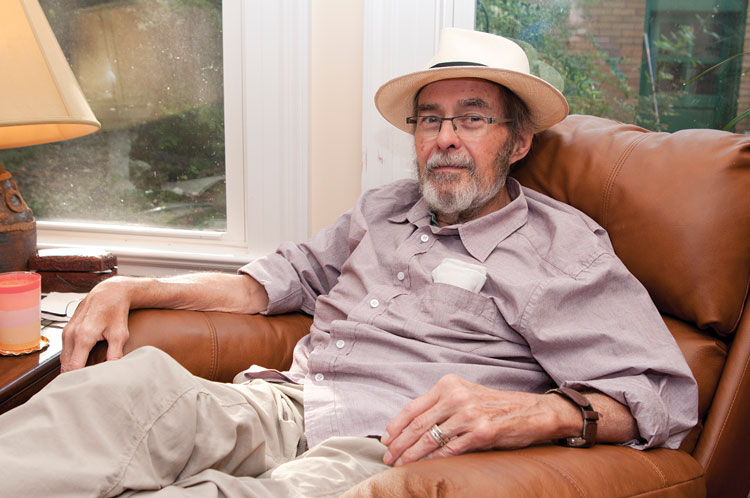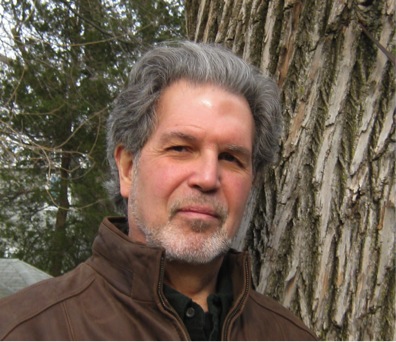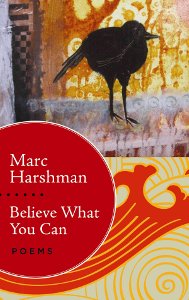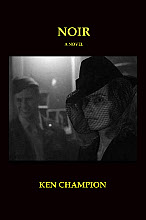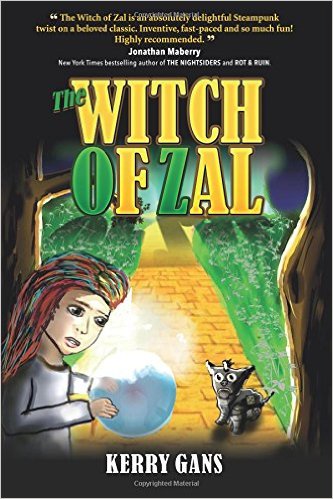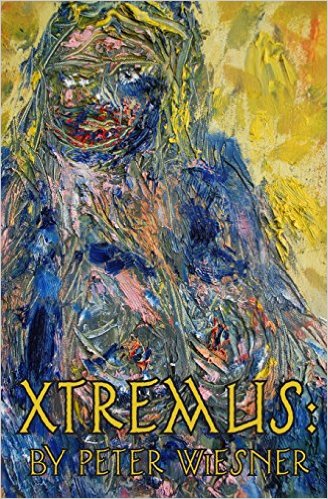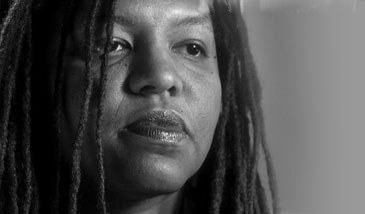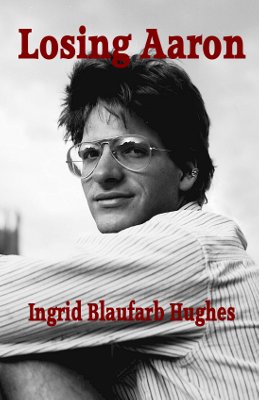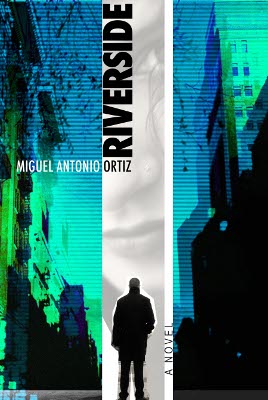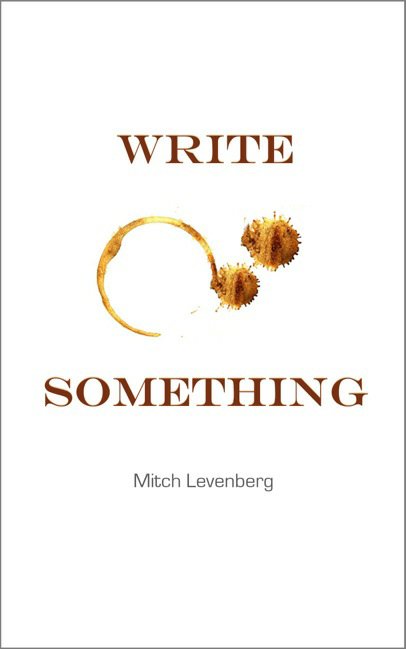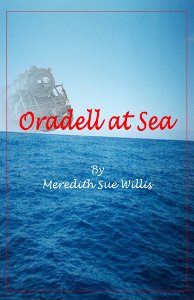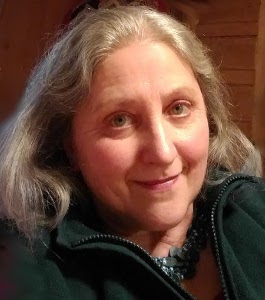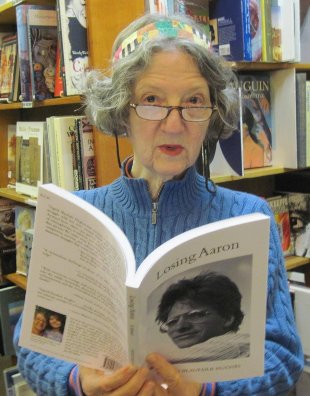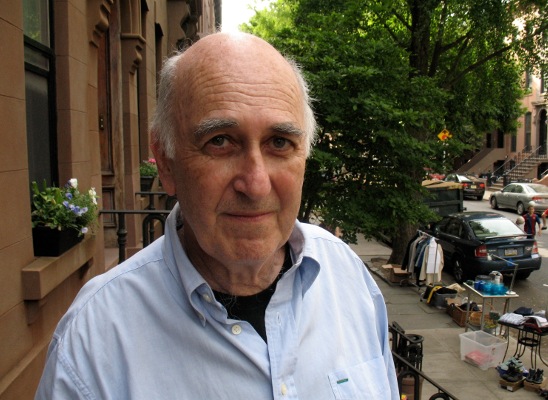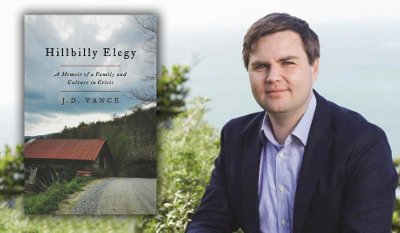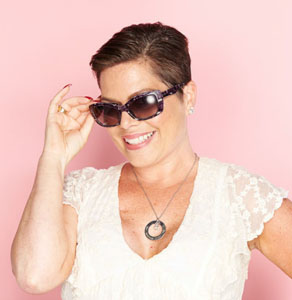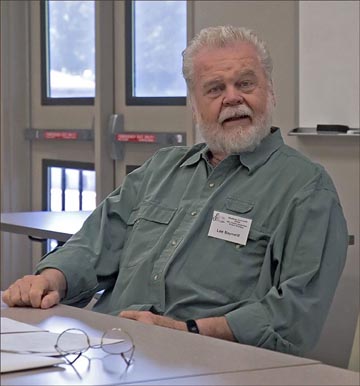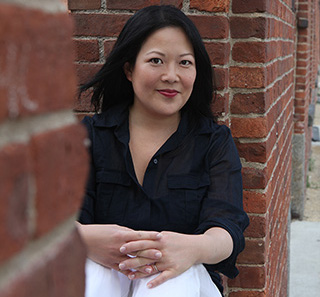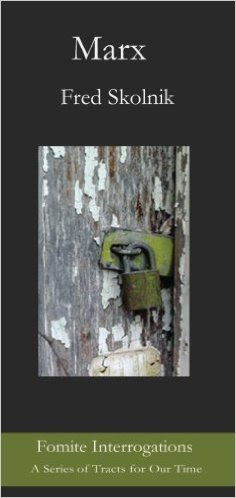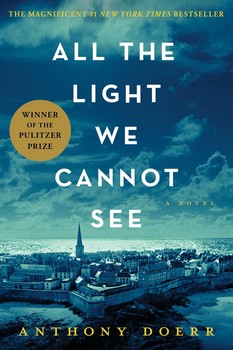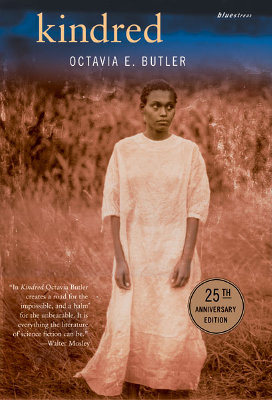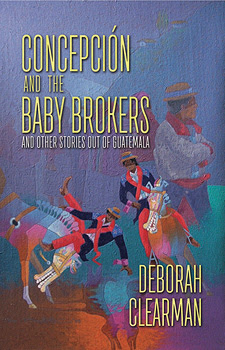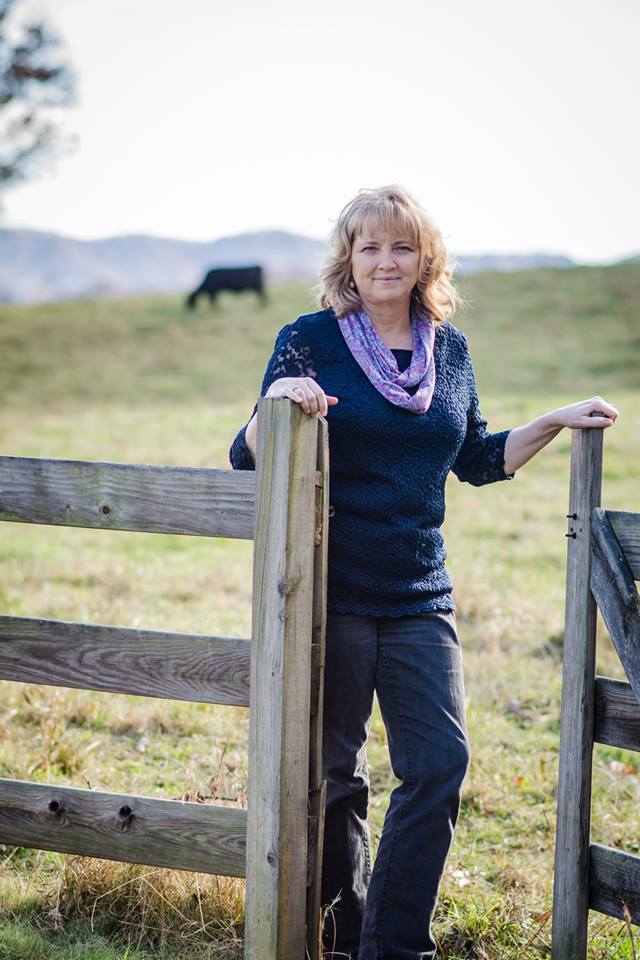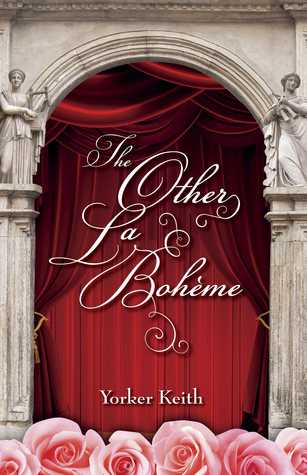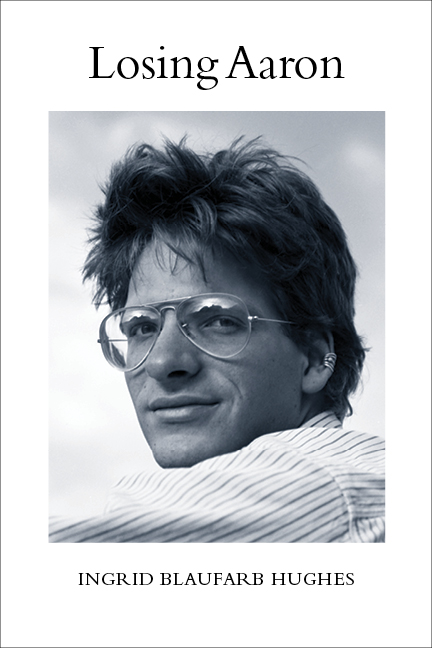Books for Readers Archives #186-190
.
.
Meredith Sue Willis's
Books for Readers # 186
August 13, 2016
When possible, read this newsletter online in its permanent location.
Back Issues MSW Home About Meredith Sue Willis
In This Issue
The Courtship of Eva Eldridge by Diane Simmons
Lionel Asbo by Martin Amis
Mating by Norman Rush
Mine Eyes Have Seen by Johnny Sundstrom
Monster by Walter Dean Myers
Imago by Octavia Butler
Prime Rift by Veronica Sicoe
First Test by Tamora Pierce Reviewed by Sarah Cordingley
Some Thoughts on Narrative Versus Drama
More Good Books Readers Respond
Things to Read & Hear Online Announcements and News
Coming Soon from Irene Weinberger Books A Journal of Practical Writing
.
Books for Readers # 186
.
I have several books I am enthusiastic about this issue. I suppose I always have books I'm enthusiastic about, but I don't really expect a lot of people to love big Victorian novels on Kindle they
way I do. This month's enthusiasms are for books I think a lot of other people will be enthusiastic about too.
First, is The Courtship of Eva Eldrige by Diane Simmons, who came into possession of a trove of some 800 letters some years ago, letters "collected into fat packets and tied with loops of tightly knotted kitchen string"—hidden away in an Eastern Oregon attic. She writes that something at the time held her back from opening them and prying into their secrets, "something that felt a lot like fear." However, the woman who had saved the letters, a woman Simmons had known since childhood, had died, and named Simmons executor of her estate. Why had the woman saved them all these years if not to be found someday and their remarkable story told?
This is our introduction to The Courtship of Eva Eldridge, the story not just of one woman's quest for love, but of an era's confident belief in romantic happiness in marriage. Simmons begins the story in March 1958, in Boise, Idaho, when Eva Eldridge is thirty-five and her dreamboat husband Vick disappears after a year of seemingly blissful marriage. Moving back and forth in time, we follow Eva's evolution from a simple farm girl through her war years as a single working woman in the ship-building boom town of Portland, Oregon, then a failed post-war marriage, to her life as a cigarette girl in a glamorous hotel in Boise where she meets and marries Vick.
Through the lens of Eva's life, Simmons reflects on the rapid changes in the role of women during the second world war and immediately after: from wife and homemaker to wage-earner and back again, women were thrown out of the workforce after World War II to make room for the returning veterans. She shows us the role the media played—first calling women into performing men's civilian work during the war as a service to their country, and then promoting marriage and home as the only suitable job for women after the war.
The first half of the book is a lively interweaving of points of view. Part 2, however opens the theme of what Simmons calls "the marriage-mad fifties" with a bombshell that begins to solve the mystery that has tantalized us so far: where did Eva's beloved Vick go? A year after he disappears, Eva receives a twelve-page letter from a woman named Odette, who met and married Vick after he left Eva. Then he left Odette. Odette has discovered earlier wives, and has started to track them down. He abandoned the wives, we learn with Eva, after short marriages with no explanation. Eva and Odette collaborate in the search through letters and phone calls. Decades later, Simmons herself joins the search, using the Internet and e-mail. She locates and communicates with surviving wives, children, and others who remember Vick. All told, she discovers ten wives.
Of course she asks why, and there's no easy answer to that. Simmons's explanation for Vick's motivation is complex: Vick apparently loved weddings, from the excitement of the courtship through the pageantry of the ceremony to the romance of the honeymoon. Once that was over, he drove off in a shiny new car in search of another bride. Vick's surprise reappearance in Eva's life leads to a satisfying denouement, which I will not give away.
Toward the end of the book, Simmons reflects that Eva "came of age in a world turned upside down, one in which her parents' beliefs seemed only dimly relevant and that—right or wrong—she too had tried to follow her heart." If at times the complexity of the cast of characters and skipping around in time causes the reader's head to spin, Simmons never loses us. We can be glad that Eva's letters and story fell into the hands of a gifted storyteller with a keen eye for social analysis and deep empathy for her subject. You don't often get this much information and thoughtful interpretation in the context of a truly gripping--and true-- story.
(This review is based substantially on one published by Deborah Clearman from Amazon.com and Goodreads.com)
.
Next, I want to share a couple of older books that really caught me up. First was Monster by the
late great Walter Dean Myers. This is YA and came out around 1999. It is quite short, written in the form of diary entries and a screenplay. It's about a teen on trial for a murder that happened during a bodega robbery gone wrong. It is deeply engrossing--all I wanted was to know what happened to Steven, but Myers also handles very well the methods the attorneys use to set up their arguments, how they attempt to influence the jury, etc. There is also a nice ambivalence about the ending--something you don't usually expect of young adult literature. There are serious questions about what is Truth, about what it means to get away with something. Are you really part of a robbery if some neighborhood punks threaten you into saying the coast is clear? Is Not Guilty the same as Innocent? And how is individual morality influenced by heavy-handed state penalties?
.
.
Finally, in my short list of favorite books for the summer, is another book by a late great writer-- in this case, the science fiction novelist Octavia Butler. The book was the finale of the Xeogenesis
trilogy, Imago. I like good science fiction, and I hadn't realized how good Butler was on straight science fiction (I had, of course, thoroughly admired her time travel novel, Kindred). Each book of the trilogy has a different point of view character, always satisfying, and this one had a deeply satisfying ending as well. It focuses on the half alien/half human "construct" people, especially the third sex, the ooloi, who have great healing powers, and also powers of passionate love and seduction. The novels are exciting, with lots of good imagined detail that all hangs together nicely, and there are also the Big Ideas that I like so much in science fiction-- in this case, the sharp limitations of the human species that include a strong tendency to hierarchy and of course, self-destruction.
Butler does brilliantly with cross species love: she has invented a species whose modus operandi is to "trade" genes with other species, make new creatures. I love that. They aren't just sucking out the marrow from human bones, and they aren't just powerful angels come to solve our problems. They have their unpleasant sides too, but are individuated and recombined in their half-human children. So nicely done.
If the book has any fault, it would be maybe the quick closure. Too many science fiction novels, I think shut it down too soon. I don't know why--length considerations? Failure of imagination? Or is it me, not wanting to leave a world that I so appreciate having had created for me?
.
FIRST TEST BY TAMORA PIERCE REVIEWED BY SARAH CORDINGLEY
If an enormous, human-headed spider devoured two live kittens in front of you, the appropriate response tends to be more along the lines of running for help rather than attack it armed only with small stones.
Especially if the lone witness were a ten-year-old girl.
In a realm where it has recently been made legal for girls to train as knights, Keladry of Mindelan has stepped up as the first female page – openly female, that is. Kel's idol, Alanna of Trebond – the Lioness, King's Champion, and the first distaff knight in Tortall in centuries – earned her shield masquerading as a boy. Kel dreams of becoming a knight, and some small, senseless part of her believes doing so will be easier without bearing the secret of her concealed gender on her shoulders.
But while the king and the law approve of her decision, that approval is far removed from the harsh reality Kel has thrust herself into. The pages' training master, Lord Wyldon of Cavall, believes females to be unfit for battle and most of her fellow pages would sooner mock and shun her than befriend her.
Lord Wyldon would rather Kel not be allowed into training, law or no law, but rather than defy his King, he requests a compromise: Kel must be placed under probation for a year, only to be allowed to continue at his discretion.
First Test explores a world in which the battle for equality – among classes and genders alike – has been amplified into the forefront of focus as Kel struggles to gain acceptance among her new peers. While Kel masters combat and etiquette, progressives and conservatives both outside of court and within use Kel and everything she stands for as a scapegoat as well as a weapon. Conservatives in Tortall would prefer women never amount to anything more than a pretty face and will stop at nothing to chase Kel out of the palace, while progressives are in full support of women gaining equal footing with men, though tradition ensures few will state that opinion outright.
A YA novel and the first of an engaging quartet, First Test invites readers to (re)enter Pierce's beloved Tortall through the eyes of a magicless young woman and in a time in which politics and protocol are as much under debate as war and trade.
MORE GOOD BOOKS (Reviewed by MSW unless otherwise stated)
Prime Rift by Veronica Sicoe is the second book in Sicoe's trilogy whose forward momentum kept me reading. This series too has cross species love, but it is more Alien Mr. Darcy than Octavia Butler's deep consideration of sexuality and gender. Whereas Butler's ooloi have power because they love, Sicoe's love affair is much more traditional: he is all-powerful, she is feisty. Sicoe's heroine Taryn has a wise-cracking YA tone. She is always saying something along the lines of "I just HAVE to save him/her/the planet/the species," and then-- with high entertainment value, she goes off and does it. She's very funny and dependable--you don't believe she's really in danger even when she's covered with killer mutants while simultaneously being poisoned from within by a kind of alien virus. It's entertaining, good natured, swashbuckling fun.
.
.
Mine Eyes Have Seen by Johnny Sundstrom is also part of a trilogy, and I find myself increasingly fond of his characters as I read on. Sundstrom creates a version of the real Old West with the slow accumulation of quotidian details and events of frontier life. He uses as his loose structure the story of Abraham, Sarah, and Hagar in the Bible. Sundstrom's hero is a former confederate soldier wants to do right and ends up with two women bearing him children, and deep friendships with the native Americans. He is in many ways heroic, and he certainly tries hard and gets confused, but he is always
working. I am charmed by the meticulous detailing of the work everyone is doing: getting enough water, bringing the cows in close, cooking, chopping wood: it's how the days are filled.
The development of the story is driven not so much by character as by historical events and natural stages of maturation and change. In an odd way, in spite of a lot of wonderfully written wars with the Indians and threats from evil white men, there is a stolid moving forward through life that I find appealing and certainly realistic. The final third of the novel gathers increasing momentum and jump cuts with cinematic panache between the Hagar character, Helga and her son running and fighting with The Nez Perce Indians who are under attack by the American army and the people back on the ranch. Chief Joseph ("I will fight no more..") appears in person not as a warrior but as a leader and helper of those who are thirsty and in trouble. The battles are described quite brilliantly from the periphery through the eyes of the women and children who, as part of the caravan, are trying to escape both the reservation the Americans want to put them on and the soldiers who fight them. The warriors are courageous, and everyone has a part in the battle, handing off fresh horses, for example, if not fighting.
We are fully fully on the side of the Nez Perce, but there are too many American soldiers, and the weight of a whole traveling tribe, while the motivation and purpose of the warriors, is too unwieldy for the Indians finally to triumph. The Indians send away their three white people for their own safely.
Meanwhile, back at the ranch, with A be and Sarah and their little community, there are a few relatively benign dangers and deaths, but the book ends with us on tenterhooks because of a frightening event that I won't name. Looking forward to the final volume.
.
.
I also read Mating by Norman Rush, which I bought and started maybe ten years ago (is that possible? Unfortunately, probably yes). I stopped, as I remember, because the beginning seemed like sex and love among Europeans in Africa. Ex pat lit, which can be okay, but I wasn't in the mood at that moment.
This time I finished it, with respect but not a lot of enthusiasm. It is carefully worked, in the end, a quirky love story. The parts I liked best were the description of a settlement in Botswana where women run their own village under the eminence grise of their American founder Nelson Denoon. The women of their various tribes and their efforts at democracy and a workable economic system include both exotic (to me) folkways and interesting cultural details and marvelously universal wants, needs, and humanity-- all that part, and the flora and fauna of the great desert where they have their village are excellent: lions and boomslang snakes!.
But the heart of the story is the narrator, who I never really liked much. I also didn't feel quite convinced that she was really a woman-- hard to explain, because Rush has clearly tried hard to imagine her. But in the end, she's a woman who falls for a heroic figure of a man and devotes her life to him. There is some humor about this, and a lot of the novel consists of their stimulating and intellectually wide ranging conversations, but it's all too much for me in the end. I didn't have patience for Denoon that the narrator and Norman Rush had.
.
.
And finally, a happy surprise borrowed as an e-book from the library, Lionel Asbo: The State of England by Martin
Amis. I probably wouldn't have read this if not for the biographical background on Elizabeth Howard I discovered for my review of one of Howard's books in Issue 1845. Howard was Amis's step mother, and apparently one of the reasons he found himself as a writer.
This book has lots of witty and lovely visual writing, in spite of its dystopian setting. The second third of the book is probably weaker than than first third and final third. I have a complaint about how grossly manipulative the theme of the dangerous pit bulls is: Will they kill the baby? Would Amis dare?) I almost wished they had done it, just to justify the brouhaha.
I have some quibbles: I got very tired of how the narrator notes again and again that Lionel's dialect pronounces "th" as "f," for example. And why on earth do the more-or-less normal couple Des and Dawn stay in the neighborhood in their 33rd floor walk-up apartment? I'm sure the answer is that it's fantasy, of course, and most of it works just fine. It's fun to read, lots of funny stuff and it managed a better ending than a lot of books.
And unlike the Norman Rush, this one inspired me to think I may read some more of his books.
.
.
READING APPALACHIA from BOOK LEAF
Thought this memoir may interest you, Hillbilly Elegy: A Memoir of a Family and Culture in Crisis by J. D. Vance. It's talked about in the second half of this article in The Atlantic (scroll down).
I also recently saw a book review of it in the Wall Street Journal. Interesting how in the Journal, they only said that the author blames Appalachian culture for the hardships of his grandparents and parents — and the only aspect of that culture that they mention is being violent, as if all Appalachian people are violent, as if that's an integral part of their culture (in actuality, read: character). Anyone reading that Journal article who's ignorant about Appalachia could dismiss poverty in Appalachia as being the fault of those who live there.
But the above article in The Atlantic reports on the more complex picture that the author draws....I can't remember if the author has actually lived in Appalachia at any part of his life. His mother and grandparents who mostly raised him are from Appalachia, so that's what he's relying on to make him the expert. But he basically grew up in southwestern Ohio where his grandfather had migrated for a factory job.
READERS RESPOND
Belinda Anderson responded to the interview with Monique Raphel High in Issue #185: "'Most writers I know, me included, tend to hold a lot back.' That really struck me as quite true. Enjoyed the entire interview. Also loved your description in a review of allowing a book to swirl around one."
NOTES ON NARRATIVE VERSUS DRAMA
While we were on vacation, we saw two short plays at the Pythagoras Theatre Works in West Stockbridge, Mass, "The Promise" and "Roman Fever" with Corrinne May and David Joseph and Diane Prusky-- in the historic old town hall. The two plays are intimate chamber dramas based on Edith Wharton's short stories, with the excellent actors we know from Shakespeare & Company and other Berkshire theaters. The themes were familiar from Wharton and Henry James-- cultured poor gentlefolk using their social skills to
make a living by marrying needy aristocrats to wealthy Americans (think Portrait of a Lady), the threat of young women dying of fever after nights out at the Colosseum in Rome (like Daisy Miller). The second play was, as I noted, actually called "Roman Fever."
I decided to read the short story version of "Roman Fever" in a .pdf online . The point of doing this was curiosity. The productions themselves were were excellent, the play writing fine, though a little static (and what I love best in the theater is always stages full of people running hither and yon).
What I was interested in what had been changed from the narrative form to the dramatic. The immediate difference is easy: maybe eighty per cent or more of the dialogue in the plays had been internal monologue or narrative in the story. Obviously the plays had to dramatize or there would have been no drama.
What was more striking to me though, was that the theater pieces felt more modern. The conflicts, dramatized, were overt: Alida is told by Grace that she's the kind of person who always says what she thinks, whereas in the story, we are told that Grace thinks it. The dialogue in the story, when it happens, is also more shocking, and, of course, by having so much said, we lose the special cultural reticence of the time and these women's class: the ladylike silence on so many matters that was idealized in the first quarter of the twentieth century.
The dramatized versions, then, were easier to identify with because of this modern openness of speech. The story was more subtle, and more revealing of a different world, in the short story.
.
READ AND LISTEN ONLINE
A Conversation About Keeping Drafts was updated 8-9-16 in The Practical Writer -- Suzanne McConnell, NancyKay Shapiro, Diane Simmons, and Meredith Sue Willis.
Ed Davis reviewed Donna Meredith's Fraccidental Death in the Charleston Gazette . See our review here.
Laura Tillman, author of THE LONG SHADOW OF SMALL GHOSTS (reviewed in Issue 184 ) has a piece about the ethics of a journalist corresponding with a murderer.
An interview with Rosary O'Neill
Interesting short story recommended by George Lies: "Lingerlonger"
.
ANNOUNCEMENTS, GOOD NEWS, CONTESTS, WORKSHOPS, READINGS AND MORE.
There is a brand new edition of Chuck Kinder's wonderful The Silver Ghost!
Barbara Crooker's new book new book, Les Fauves, will be published by C&R Press in 2017.
George Lies has lots of good publishing and award news: On June 10, 2016 his short story "Stand Still" finished 4th of 86 entries in the short story of WV Writers State writing competition judges by Pinckney Benedict. Also see his "Rafaello's Night" in the Heart Wood Literary Journal of April 1.
Jim Minick's novel, Fire Is Your Water, is due out from Ohio University Press early in 2017. It's already garnered kind cover quotes from Lee Smith and Fred Chappell. "Birth," a short nonfiction piece, just came out in Still. This fall Poets & Writers will publish an article on his experience of teaching in one MFA program while studying in another. Also this fall (Oct 27 and 28), the Iron Mountain Lit Fest at Emory & Henry College will celebrate Minick's work—a huge honor.
Congratulations Jim!
There was terrible flooding earlier this summer in southeastern West Virginia. If you or another artist you know needs assistance due to the flooding in WV, please contact Les Snow at CERF. CERF+ would like to make sure that any professional artist working in a craft discipline seriously affected by the flooding is aware of the emergency relief assistance available from CERF+. Direct Assistance to Artists Working in Craft Disciplines CERF+'s programs include: · Grants up to $6,000; · No-interest loans up to $9,000; · Booth fee waivers at craft shows; and much more.Penner Publishing is happy to announce the release of the much-awaited novel, The Eleventh Year by Monique Raphel High. (See our interview with Monique in the last issue, #185)
.
.
Meredith Sue Willis's
Books for Readers # 187
October 10, 2016
When possible, read this newsletter online in its permanent location.
Back Issues MSW Home About Meredith Sue Willis
Get in touch with Meredith Sue Willis
Hamilton Stone Editions #35 Fall 2016 is ready to read!
Top-shelf Poetry! Knock 'em dead fiction! Powerful nonfiction!
Above, left to right, top to bottom: Burt Kimmelman, Sir Walter Scott, Llewellyn McKernan, Randi Ward
.
In This Issue of Books for Readers:
The Heart of Midlothian by Walter Scott
Beneath the Coyote Hills by Bill Luvaas
.
.
Gettng Ready to Travel by Llewellyn McKernan
Abandoned Angel by Burt Kimmelman
How to Season a Turkey with Bear Grease-- Phyllis Wilson Moore Reviews an Old Novel
First novel in the Virals Young Adult Series -- Reviewed by Sarah Cordingley
Dissident Gardens by Jonathan Lethem
.
When I Was Puerto Rican by Esmeralda Santiago
Margaret Fuller: A New American Life by Megan Marshall
Yorker Keith on Hiring a Book Marketing Company
More Books to Read Readers' Suggestions
John Birch Blog Things to Read & Hear Online
Announcements and News Irene Weinberger Books
.
Books for Readers # 187
.
First, let me invite you to dip into the latest issue of The Hamilton Stone Review #35 , which has just gone live online. It has excellent poetry chosen by Roger Mitchell, the regular poetry editor, from poets like Lana Bella, Robert Beveridge, Gareth Culshaw, Salvatore Difalco,Alejandro Escudé, Alice Friman, Louis Gallo, Howie Good, Gail Hanlon, Dave Harrity, Heikki Huotari, Clinton Inman, Clara B. Jones, Richard Jones, Megan Kellerman, Anna Ivey, Michael Lauchlan, Sean Lynch, W. P. Osborn, Simon Perchik, John Repp, Judith Skillman, J. R. Solonche, Andrew Spiess, D. E. Steward, Allison Thorpe, and Mark Young.
The fiction, edited by Shelley Ettinger, includes an absolutely knock-out story by Andria Nacina Cole as well as wonderful pieces by Tim Fredrick, Gimbiya Kettering, and John Warren Lewis.
I had the privilege of choosing nonfiction for this issue, and it includes the heart-breaking opening of Ingrid Blaufarb Hughes' memoir Losing Aaron (see below), as well as an incident from the life of the late Jane Kinzler, a piece on midwifery by Nechama Sammet Moring, CPM, MA, and a moving one on loss and loving by Dolly Withrow.
Please read, and let me know what you think.
.
In recent recent months. I've been trying to read at a poem a day (or more), because I like poetry and had some college training in reading it, but also because I generally find it slows me down emotionally and hones my sensitivity to language. This last seems especially important to me, given my return to an interest in story and plot-driven fiction.
I've been reading Elmore Leonard again, and I tried out one of Patricia Cornwell's Kay Scarpetta murder mysteries (which didn't impress me-- too many characters seemed to have been set up in earlier books, so maybe I'll try an early one). I've gone almost to the end of what's available of Donna Leon's Commisario Brunetti novels, which are really about the city of Venice and about corruption in high places and the slow creeping of cynicism as we age.
And, of course, there is always Victorian literature.
This issue I'll review some new books, three of poetry, but begin with some comments on a Walter Scott novel, The Heart of Midlothian.
.
.
The Heart of Midlothian by Walter Scott
Just a few words about this novel that, along with other books by Scott, was an inspiration to young Charles Dickens and probably all the great Victorians. It is delightfully unselfconscious in its storytelling. The heroine, Jeanie Deans, isn't even a proto-feminist, but she is a powerhouse just the same. She insists on standing by her principles and refusing to lie on the witness stand-- even though it condemns someone she loves. Then she walks from Edinburgh to London in an effort to save the condemned. She's a wonderful character, and a
good example of a Dead White European Male managing to create a fine woman character by keeping a respectful distance and reporting her actions and speech, including some formal thought-speech. The omniscient story-telling form works with him on this.
The plot, of course, is old-fashioned and dependent on coincidences, but nobody seemed to complain in the early nineteenth century. The Scots dialect is often impenetrable, and there are gallingly prolix explanations of the factions of eighteenth century Scotch Presbyterianism.
But Scott does fantastic action scenes. Out of long passages of allegedly humorous dialect dialogue and back story (which he has no qualms about making a full pause to insert), really striking scenes suddenly take shape before us: the court room or a mob scene or a sword fight. His action writing is admirably y unadorned and realistic: there is a mostly offstage skirmish toward the end that is fast, shocking, and brutally random (and thus totally believable) as to who lives and who dies. Once guns fire and swords clash, anyone could end up dead.
Interestingly, one rather tedious character, who had seemed to be in the book only for comic relief, proves to be a trained and practical killer, calm and efficient. In fact, Scott's characters are not caricatures, although some of their speeches are. He has no problem making fun of his lower orders, and he clearly prefers his well-spoken upper class swells like the Duke of Argyle, but everyone has some rounding, and he seems genuinely fondly of the people who walk through his imagination.
.
Beneath the Coyote Hills by Bill Luvaas
Beneath the Coyote Hills is a just-published novel about a homeless, epileptic man who in his early life was beaten down by life with a drunk father, a high
achieving brother, and a depressed mother who almost never makes it out of her nightgown. The main character, Tommy, marries, studies, has a number of good chances, gets a "prestigious Wallace Stegner Fellowship" for an MFA at Stanford and drops out when people criticize his novel.
The best parts of the book are in the present of the story, where Tommy lives as a squatter in an olive grove, sharing in some abandoned house stripping with someone called Felony Fred. Living nearby are various skinheads, survivalists, and evangelical Christian motorcycle gangsters. These characters as well as Tommy himself and his hallucinations of Lizard and and Pop are simultaneously affectionate and hard-edged.
Tommy also has a novel-within the novel about a character who is Tommy's opposite, a figure with some of his brother's multiple talents and penchant for success. This is fun to read as something between wish fulfillment and vengeance on the rich and powerful. About two thirds in, though, the book we are reading becomes increasingly meta as Tommy's novel and the world of the novel we think we're reading begin to mix. Then Luvaas adds another layer in which the wife of Tommy's main character turns out to have written a best selling novel about Tommy's life. Discussions arise about who is allowed to make changes in people's lives, and Tommy ends up burning his novel, but the holocaust of his layers of story becomes a real wildfire.
There is a semi-happy ending, and I'm sure the case can be made that all the meta stuff is in Tommy's mind as much as the lizard man is, although I would have been happy without the literary pyrotechnics. By the end, Tommy has exorcized his father and taken several good and even heroic actions.
.
<
.
Whipstitches by Randi Ward
This beautifully produced book of tight, intense poems has ostensible themes of animals and plants and weather in a rural place. A handful of the poems have a bit of wisdom (a poem called "Tadpole" says in whole, "When you're stuck/in a rut,/everything depends on the weather"); a few wear their emotion on their sleeve, like "Grandma," in which "What's left of her" paces a sagging porch wearing one sock. There is a lot of wit and a modicum of humor as in "Daddy Longlegs" where the poet asks the arachnid to stop pointing. There are references to other poems with strong images and lots of white space (the standing water in Ward's "Wheelbarrow," unlike in Willam Carlos Williams', however, breeds mosquitoes.)
But what really stuns and holds me about these small explosions is the worlds they suggest funneling down into the spare utterances. Many of these implied worlds and histories of experience are frightening, bleak and violent. These represent probably the largest group of poems. "Bath" has only fourteen words, but the penultimate one is "bruise," and the woman in the poem soaks in a way to "make/a blind mirror cry." Such poems hint at realms of suffering behind the crystalline words on the page: "Lights Out" seems to be a child in danger at bedtime. And, to quote one poem completely, the speaker in "Gate" has a profound ambivalence about home that outshines dozens of overblown memoirs of family dysfunction, abuse, and mental illness:
Oh merciful
gate, break
these legs
for me
so I don't
have to walk
home.This kind of writing shames us all for our sloppy purple prose and prosy poetry.
Getting Ready to Travel Llewellyn McKernan
This new chapbook by veteran poet Llewellyn McKernan is full of striped angels and rhyming patterns that we associate with children. Everything, though. that seems bouncy and chipper is
undermined just a little, moved just a hair off plumb.
There is a consciousness of the rhyming, of both its ancient power, its childishness, and its way of pulling us along. Consider the beginning of # 4:
In puddles where all the dirt's been banished,
trees step backward until they vanish.What is that about? It has an assertive freshness that is not young but is inescapably new. Some passages are dream visions, some are like what people see when they got to a new place or taste a new food. McKernan is not, of course, young or innocent or ingenuous. One of my favorite sections is a mystery that starts with the narrator walking by a country church and ends with "Big Sister Wrong/ with blood on her sleeve /is mother to the child we call Mystery." Is this an interpretation of religious symbols? An embodiment of the strange messages dreams bring us?
Also favorites of mine are the sections with strange characters: #20 has an angel "A sweet young zebra-striped/thing" that once had scales. #17 is about an old lady whose shoe sprouts "duck" tape and has a refrain, "She once had a daughter/She once had a son."
.
She walks with stiff hips, she stumbles a little.
Her life is quite plain, her life is a riddle.
What's left in her booth is a glass of tea
where the ice becomes what it used to be.
What more to be written on this small sheet
Life isn't short,
Life isn't sweet.
.
McKernan's chapbook is not an essay in verse and not a series of language jewels: it's an experience, and I recommend you'll take it.
.
Abandoned Angel Burt Kimmelman
This is Burt Kimmelman's ninth book of poems, and he has a long list of praise from people like Hugh Seidman, Robert Creeley, Alfred Kazin, Jerome Rothenberg, Michael Heller, Harvey Shapiro, and Madeline Tiger. I only looked at the names on the back of the book after I had
read for a while and sort of popped back repeatedly in surprise and pleasure. Where have these poems been all my life?
Clearly, the poets know about Kimmelman.
The book is divided into Weather and Cities, but the individual poems, whether about a misty morning in Maplewood, New Jersey or the throbbing life of a New York City street, are pellucid and full of wonder. One of the things I especially enjoyed was how Kimmelman found words for things I have seen but unable to articulate– often transformations and transitions, such as "dark becoming green" at the end of a poem called "Dawn." Of course, the power of those simple words requires the rest of the poem for its real effect, but the change from color to dark or dark to color has always struck me as important perceptually.
. Or again, in "Quarrel of Gulls," the birds scatter after eating: "lifting apart from each other, wings out." That "lifting apart" just nails it. It reminds you of one reason we need our poets, or at least a poet like Burt Kimmelman: words that capture the psychological thrill of what we experience.
In "Regatta on Lake Union, Late July," five short lines do this for light and wind, and a poem called "Taking Off from Orly Airport" manages to recreate a moment when what we see blends with who and what we are..
Most of the poems are imagistic and only a few are very long. Two or three somewhat obliquely with history, especially the Holocaust. The poet looks closely at photographs or makes a visit to Auschwitz . There is no melodrama, just what we can see, experience, put into words, which is far from nothing.
Kimmelman's work is, in the end, poems of perception that make no apologies for the limits of language. We are our language far more deeply that we admit, and Kimmelman makes a virtue and adventure of this.
.
.
MORE BOOKS
.
PHYLLIS WILSON MOORE ON "How to Season a Turkey with Bear Grease"
Here are my comments as well as a recipe from the novel Young Kate (or, New Hope or, The Rescue): A Tale of the Great Kanawha, attributed to a John Lewis and published in 1855 by Bunce and Brothers Publishers, NY. -- Phyllis Wilson Moore
.
Lewis knew the region around the Greenbrier Resort and Hawk's Nest well. There is a Kate's Mountain in the area, and an area called The Loop. In the novel he refers to the mountain, the loop, Hawk's Nest, the slaves at the Greenbrier Resort, the gentry.
One hunter, Ben Bramble, sells venison, hides, and moonshine to the Resort. He scorns the gentry visiting there and claims, "They eat their niggers." This is his way of pointing out enslaved persons are sold to finance the summers the gentry families spent in the cool of the mountains around White Sulphur Springs.
The novel was first named Young Kate, for the loyal dog in the story. It was also published as New Hope, the name of the home of the main family in the story, and as The Rescue (Young Kate helps rescue the mistress). Henry J. Thomas published the same story (a shorter version) and called it The Allens: A Tale of the Great Kanawha Valley.
The turkey recipe described in the novel is one of the rather humorous sections. I laugh every time I read the exact time it took for alcohol-drinking young men to cook the bird. The men are traveling and must kill game for their meals. Early in the day they shoot a 20 # turkey. They are spending the night at a way-station and contribute the turkey as their share of a communal meal consisting of turkey, bear, dried venison, ham, and corn bread. Before they cook, they drink heartily from a jug of the "rall critter" (rye whiskey).
The narrator of the novel describes the cooking scene in great detail. (p 76-77): "After the turkey was prepared in the usual way for roasting, a long, sharp, narrow knife was passed around the thigh bone and up to the hip joint, separating the flesh from the bone; the bone was then extracted. In the same manner, the wing bones were taken out. An incision was then made from the inside of the body, and the breast bone was taken out and those articulated to it, passing on to the back below the neck….Flitches of fat bacon, peppered, salted, and rolled in flour, were inserted into the legs and wings; and the internal cavity was filled with a compound of cold, light bread, crumbled fine, and kneaded up with bear's fat, salt, and pepper. All the apertures were closed, a string tied around the neck close to the body, and the turkey was then suspended by the legs by a cord before the bank of clear coals that filled the whole fireplace. A short-handled frying-pan was placed beneath to receive the drippings.
"The lean, fresh bear's meat was cut into steaks, and the fat pieces into similar steaks; these later were salted and peppered, and a wooden skewer or spit, three feet long, was thrust through the middle part of a lean steak, and then of a fat piece, alternately, till the stick was full. This was also hung up before the fire perpendicular, but it was occasionally taken down, slightly dredged with flour, held horizontally over the coals, and again suspended over the skillet which caught the gravy. The bear meat and bread were not put to the fire till the turkey had been revolving before it for one hour and thirty-seven minutes. They were all brought in brown and smoking hot. The gravies were placed on the table in two tin pans."
It sounds delicious!
Sarah Cordingley Reviews the first book of the VIRALS series
Science fiction meets young adult in this exciting first installment of the Virals series. Kathy Reichs, a forensic anthropologist and crime author, teams up with her son, Brendan, to craft her YA debut novel.
Tory Brennan, grandniece of the world-famous forensic anthropologist Temperance Brennan,
has her world uprooted when her mother falls victim to a drunk driver and Tory is sent to live with a father she didn't know she had on an island most don't know exist.
But island life is far from mundane, especially once Tory discovers the place her father works – Loggerhead, an island even more remote than the one she calls home. But its unique qualities make up for its location – free-ranging troops of monkeys, Loggerhead Sea Turtles, and an off-the-books wolf pack call the island home, alongside the LIRI research compound. But when she and her friends discover the body of a young woman buried on Loggerhead, they uncover a decades-old unsolved murder, and in trying to crack the cold case, they stumble across something far more dangerous. In a little used LIRI lab, they find an imprisoned, sickly wolfdog pup – the missing member of Loggerhead's pack.
They break the dog out without considering the reasons it was locked in a lab, concerned only for its life. Within a week, the wolfdog is healthy again, but the teens have fallen victim to an experimental strain of parvovirus – one contagious to humans. They survive the virus's attack, but far more than surface damage has been done to their bodies. With the murderer still at large and their very DNA in rebellion, Tory and her friends have got a dangerous mission ahead and a target on their backs. But they might not be powerless anymore.
.
.
.
.
Dissident Gardens Jonathan Lethem Reviewed by MSW
With two excellent point-of-view characters, Rose Zimmer and Cicero Lookins, and a solid ending, Lethem does more right than wrong in this book. Those two characters, anyhow, are written in language that matches the story line in form and tone. Cicero, the child of Rose's lover, movingly but unsentimentally tells of Rose's last months in a nursing home. There is a real relationship between the old woman and the man who grew from the sour boy she educated in so many ways.
I'm not as fond of some of the other point-of-view characters, especially Rose's daughter Miriam and Miriam's husband, a sort of Clancy brother Irish folk singer who wants to be Bob Dylan. A lot of the Village-in-the-sixties material feels too carefully constructed. And sometimes Lethem uses his swirls and whorls and surges of language for nothing more than to get one character to make a simple point about another one. It's a waste of words. Nor do I really believe his version of Miriam's last hours in a jungle guerrilla encampment. Imagining something extreme is part of what a novelist does, but the fact that we do it and have the right to do it doesn't mean we always do it well.
On the other hand, the Rose sections have a splendid Yiddish-inflected English, and Rose's little grandson Sergius, the child of the romantic-revolutionary hippies, is excellent. Sergius as an adult, however, is less successful, although his character gives us eyes for the strong ending.
It's a mixed bag: when it was good it was very very good, and when it was bad, I was counting pages to the end.
.
.
.
When I Was Puerto Rican by Esmeralda Santiago reviewed by MSW
I borrowed this as a digital library loan when the book I was looking for wasn't available, and I'm so glad I did. How did I miss reading it sooner? It's a memoir of growing up in Puerto Rico and New York City, that back-and-forth life trying to make a living that was at its height in the nineteen sixties and seventies.
Esmeralda's mother is the most amazing character: seven kids before she is thirty, 11 children total. She is smart, ambitious, hard working, and still likes to look her best. The narrator's childhood material is rich and delightful, and there is a sharp, brief section at the end in Brooklyn when Esmeralda talks herself into the High School of Performing Arts.
Margaret Fuller: A New American Life by Megan Marshall Reviewed by MSW
I actually laid aside this biography as I approached the end because I didn't want to read what I already knew: that Margaret Fuller died with her husband and little son, their ship run around off Fire Island in a storm in 1850 when she had just turned 40. It's an amazing and horrible incident: ten or twelve hours of
this foundered ship, 300 yards from shore, and a couple of hundred people, scavengers by trade, watching--people with no interest in saving the crew or 6 passengers, only in picking up their trunks and feathered hats when they drifted in.
But that was a random death. The rest of her life is instructive and fascinating and the opposite of random as she struggled to make a place for herself that satisfied her education and ambition. I knew she was part of the Transcendentalist circle, but new to me was that she was a foreign correspondent for Horace Greeley's newspaper in Italy during The Garibaldi-Mazzini 1848 republic of Rome-- a revolution, in the end destroyed by troops from France's so-called second republic, plus Austria. She was writing dispatches back to Horace Greeley's newspaper, pregnant, keeping it secret, no one quite sure when and if she married her Giovanni Ossoli. Then trying to make sure a hired wet nurse fed her baby, dodging cannon balls, looking for her solider husband.
There was a brouhaha back in the states when all this came out--how could the quintessential American woman intellectual marry someone beneath her: unintellectual, a soldier. The problem was basic sexism and probably classism too (although Ossoli was some kind of minor nobility or at least related to such). How many men have married women who satisfied their need for care and comfort? And apparently Ossoli was loving and sweet-tempered.
Fuller was the first of her kind in the United States, a path breaker for women in so many ways, especially her book Woman in the Nineteenth Century. This excellent biography was published in 2010, and won a Pulitzer Prize for Biography. Well deserved!
.
.
READERS' SUGGESTIONS
Belinda Anderson writes to say, "Regarding Walter Dean Myers (See review of his Monster in Issue #186 ), thanks to Phyllis Wilson Moore, I recently discovered NOW IS YOUR TIME! THE AFRICAN-AMERICAN STRUGGLE FOR FREEDOM. I recommend it."
For Writers Considering Hiring a Book Marketing Company
Yorker Keith writes that he has used a company called BookBuzz that impresses him with the
power of social media. He questions, though, if it is " a different story whether or not these blogs turn into robust book sales, [but] at least this approach propagates book promotion to the Internet world, which means the entire world."
He says that the book marketing company charged $399.00 for promoting his book: "What they did for my novel "Remembrance of Blue Roses" is excellent." (See information here) . He says that "BookBlizz arranged a single day book blitz on August 31, after which bloggers hosted my book using this link.....If you are a Twitter member, please search for "Remembrance of Blue Roses" on your twitter account, then a series of blogs appear (try to click both "Top" and "Live" tabs on the top). This is quite amazing. BookBuzz seems to know how to use Social Networking for the book promotion.
"I can highly recommend BookBuzz.net to your newsletter subscribers, who may be seeking an effective yet inexpensive way to promote their book."
READ AND LISTEN ONLINE
Don't forget John Birch's continuing blogspot collection of essays. The current one is about culture clashes between Americans and the British during the Second World War.
.
ANNOUNCEMENTS, GOOD NEWS, CONTESTS, REMINDERS, AND MORE.
Rita Quillen's new book of poems: The Mad Farmer's Wife now available!
Latest updates on Barbara Crooker's website: New Online Poems!
Carolyn Millier's "Counting the Fish in the Sea," a non-fiction book for children, tells the true story of how researchers from the Virginia Institute of Marine Science (VIMS) tackle what might seem an impossible task—counting the fish in the sea. Miller explains how a NEAMAP (Northeast Atlantic Monitoring and Assessment Program) trawl is conducted, and how scientists sort, count, and analyze the fish. Each page is accented with actual photographs depicting the exciting moments of a research cruise. Miller also developed a way for children to continue learning about sea life by creating an interactive blog following the adventures of 'Sandy the Flounder.' Kids are able to visit the site to ask questions they have about the book or marine life. (Reviewed by Erin Kelly, VIMS). Learn more .
Penner Publishing is happy to announce the next novels by Monique Raphel High. (See our interview with Monique in issue, #185)
Don't forget The Courtship of Eva Eldrige by Diane Simmons--nonfiction about leaving the farm, women in war industry in the 1940-s, and serial bigamy! See review in Issue # 186.
Meredith Sue Willis's
Books for Readers # 188
December 16, 2016
When possible, read this newsletter online in its permanent location.
Back Issues MSW Home About Meredith Sue Willis
Get in touch with Meredith Sue Willis
Need Last Minute Holiday Books? Check out how to buy the ones here,
and look at the suggestions from past issues; also take a look at
Hamilton Stone Editions, Irene Weinberger Books, and mine!.
In This Issue of Books for Readers:
The Hemingses of Monticello: An American Family by Annette Gordon-Reed
Believe What You Can by Marc Harshman
The Fountain Overflows by Rebecca West
The King in the Stone by Carmen Ferreiro-Esteban
Noir by Ken Champion
More Books to Read
Phyllis Wilson Moore on American Jewry and the Civil War by Bertram Wallace Korn
Colorless Tsukuru Tazaki and His Years of Pilgrimage by Haruki Murakami
Let the Great World Spin by Colum McCann
.
.
Things to Read & Hear Online
Announcements and News
Irene Weinberger Books
.
Another word from our sponsors.....
Opportunities to study writing with Meredith Sue Willis:
January 2017: Seminar on Character goes live at S&H Publishing's Short and Helpful Online Writing Workshops. This is a video workshop that includes limited teacher feedback.Spring 2017 Literature and Medicine reading and discussion course at NYU Mondays, February 27, 2017 through April 24, 2017, 2:20 to 4:00 PM. (LITR1-CE9006)
Spring 2017 Novel Writing, Wednesdays February 8, 2017 through April 26, 2017 at NYU (WRIT1-CE9357)
Books for Readers # 188
The Hemingses of Monticello: An American Family Annette Gordon-Reed
This is one of the best books I've read in a long time. It is the story of the descendents of enslaved woman whose children were half siblings of Thomas Jefferson's wife, and then Jefferson himself had children with one of those siblings, after his wife's death. It is about the complexity of family relationships, the paternalism
of Jefferson, and about how most of Jefferson's "people" were sold off because of his overwhelming debts after he died. It is a book that was possible because of the unusual recording of the doings of the Hemingses, unlike the vast majority of enslaved people. It is about how Sally Hemings (Jefferson's wife's half sister) and her older brother James were in Paris with Jefferson and might have left him there for freedom, but both in the end made deals with him. James eventually received his freedom, and Sally extracted a promise from Jefferson that if she became his bed mate and help meet, he would free any children they had.
She carried seven children for him, of whom four lived to adulthood. Two of these were never officially freed, but were light enough in color that the best chance for them was to be sent quietly into life a white people, completely out of touch with their families. Two others were granted freedom as black people. The book is also about Jefferson's ambivalence about slavery, his white family's closed doors on his relationship to Sally, and about the the vicious public attacks on Jefferson and Hemings from newspapers and others. Gordon-Reed speculates brilliantly about whether or not true affection and even love might or might not be possible between slave and enslaver. She writes powerfully and marshals her extensive sources with deceptive ease.
The saddest part of the history is Jefferson's financial ruin at the end of his life, and how few of the people who served him were given freedom. Some of the extended Hemings family managed to buy each other and live locally, but many others continued in slavery. The book offers a look at American chattel slavery that comes about as close to the lives of actual enslaved people as any documentation I've ever read, and of course, we have to remember that these were very special enslaved people: many if not most of them were half or more white (Jefferson's children were three quarters white), and most of them were blood relations of Jefferson's white children.
What a world that was. Not as likely to cause climate change disaster as ours, but equally disastrous for the individuals caught up in slavery.
Believe What You Can by Marc Harshman...
...is a wide ranging, rich collection of his poetry, organized around several threads: first is nature (he grew up on a farm and lives in northern West Virginia): there are deer and doves like the ones who "with a thudding whinny, they spring, and lift, and fly." (p. 85), as well as a plethora of precise observations that he tosses off in quantity, with ease, and always hitting his target.
Nature poems blend seamlessly into farm life, including a powerful prose poem in which Uncle Elmer tenderly encounters his wife's corpse
and then calls on the young narrator to sit with the body until the undertaker comes, while he, Elmer, goes back to making hay. This piece, "Aunt Helen" (p.75), is a story on the surface, but ends with one of Harshman's many interrogations of God.
The answers Harshman derives tend toward a Buddhist emphasis on this present moment, these things around us. One lovely poem called "Monastery" tells how the brothers dug vegetables and listened for God and without any effort God came and sang for them in a wren suit (80). That's a Christianity this world could really use.
But I think the series of poems that surprised me most were the war poems. There are a number of damaged returned soldiers, including one who may be Harshman's father or some other veteran of the allegedly good war-- a veteran whose son is a poet who uses the word "Fuck" in a poem (p. 50). This poem, like several others, creates a character and tells a story, and Harshman's ability to do this without weakening the rigor of the language is a wonder.
Finally, there are a number of poems of nightmare or perhaps horror like "Where No One Else Can Go," in which a little girl with "a fistful of white violets" is left inside "the screaming house." It's pretty searing, and somehow adds to the sense that not only are American veterans traumatized, but so are ordinary middle-Americans. (p. 35)
This collection shows Harshman, the poet laureate of West Virginia, at the height of his powers, reaching out, reaching in, without melodrama, without posing, but with passion and apprehension of the mysteries.
.
.
.
The Fountain Overflows by Rebecca West
This late novel of Rebecca West is is long and sometimes a little meandering and a little too indulgent of its precocious English children and their eccentric parents, but it is definitely worth taking the time to settle in and read. Rebecca West isn't read as much today
as perhaps she ought to be. She is often remembered as the lover of H.G. Wells and the mother (with Wells) of Anthony West. There were a lot of fireworks in both relationships.
In this novel, she remembers and fictionalizes her birth family at 50 years distance in time. The family are all artists and intellectuals; the brilliant, deeply selfish father has trouble keeping a job and gambles any money he gets on the stock exchange. The mother is an astonishing musician, disheveled, opinionated, and charming. She was a concert pianist who stopped to marry and is making pianists of the narrator Rose and her twin sister Mary.
The story begins when the girls are maybe seven or eight, at a good moment for the family when their father finally gets a job as a writer-editor for a suburban London paper. It runs roughly chronologically until the father leaves the family, when the girls are in their teens. Music is discussed at great length, and musicality is a high family value. One of the most difficult problems for Clare the mother and Rose and Mary is that the older sister insists on being a performing violinist when, the others are convinced, she can't play and doesn't understand music. The fourth child, the baby brother whom everyone likes best, is one of those boys who can do anything– juggle, play many instruments– but is also a genius with making people feel comfortable.
Gender is significant, too, as West, a self-declared feminist, looks at how extremely talented women fared in middle class British life in the early 1900's. The father, Piers, unapologetically sells beloved furniture without asking his wife, and Clare never complains, and is in fact conscience-struck on the rare occasions when she makes some choice, usually financial, that favors her children over her husband. He, meanwhile, writes a monograph on the future of the world that essentially predicts the fall of the Austrian Empire and the rise of Hitler. The dramatic heart of the novel is when the family gets involved in the murder of the father of a schoolmate of the girls, and Piers exhausts himself lobbying friends in Parliament to save the murderer– the dead man's own wife,
There is an occasional appearance of the paranormal, notably a battle with a poltergeist that brings Clare's best friend and her daughter into the family circle. Often things are told lightly, with an almost obtuse optimism, but it ends with a long, extraordinarily moving scene the day after Piers leaves when the remaining family members go to the botanic gardens and eat sandwiches in front of a special flower that blooms only briefly. It's hard to capture the tone of the scene, but it is, in spite of a slowness that is never heavy, and in spite of the poltergeist, a well structured narrative with many pleasure and a true re-creation of childhood and adolescence in a private world where art and kindness are the highest values.
.
.
The King in the Stone by Carmen Ferreiro-Esteban
Carmen Ferreiro-Esteban's novel The King in the Stone is a romance- fantasy with very serious themes. It includes both time travel and travel to other worlds–I didn't read the previous book in the series, so I'm not absolutely clear on how these movements through time and space are
effected, but Ferreiro-Esteban always keeps the present of her story sharply in focus, so there is no confusion.
Here, Andrea and her love Julián (who take turns with the point of view) come across as easy-to-identify-with young people in their late teens or early twenties. Andrea in particular seems very modern and has made a decision that she wants to stay in our contemporary world, where she believes she will have more freedom. Julián, who has been a warrior and a king, has more trouble with contemporary customs. For example, he sees Andrea in the room of a male friend, and promptly breaks off their engagement.
Mourning the loss of Julián's love (she believes), Andrea goes off on an archaeological dig to Spain. There are multiple misunderstandings between the lovers: repeatedly they find one another, recognize their love, are parted by circumstances or more misunderstandings (usually when they see the other with a potential lover). There is a kind of ritualistic movement in this, and you come to expect these waves and troughs that carry us through the story. The reader always trusts, though, that the couple will eventually be together.
What I liked best about this book, though, was the way it breaks from the simple love story with a family theme, and all the parts about Spanish history. Both Andrea and Julián are descendants of early rulers of Spain from the time of the original Arab conquest– long before the Spanish empire in the Americas and long before the reconquest by los reyes católicos, Isabella and Ferdinand. One driving plot element is the mystery of who is the early medieval king whose stone image they find on the mountains?
This is an energetic story with lots of momentum and deep emotions woven into the fabric.
.
.
Noir by Ken Champion
This is a small book with great depth. The main character, Vincent, is one of Champion's gripping working class men who have achieved a university education. He is at once highly perceptive and intelligent and angry at a world that doesn't allow him to integrate his class roots with his present world view. Vincent loves the architecture of London, the bricks and windows and skylines. He is also fascinated by the period of the second world war, and indeed he first sees Gail dressed in a period costume and begins to fall for her. Part of their love making is often acting out scenarios of various types in an attempt to grasp the mysteries of time and place.
Vincent is also a university level teacher of sociology, mostly to what he calls "mature" students, many of whom are African immigrant women. His goal with his students is to teach them to question-- not only to believe (many of them are religious by culture), and he is apparently very popular with them, although his insights into who they are, and his tendency to speak truth as he sees it in all situations, gets him sacked from his job.
He hates what we call in the States political correctness, and also hates people eating on trains and riding bicycles on the sidewalks. There is a crisis, after his affair with Gail falls apart, when he acts with petty but vicious violence on the perpetrators of such petty actions. He is a dark, clever, and quirky man, and one who bounces back from even his own excesses. Gail is in the end too conventional for him--she demands communication and talking, whereas he is an inveterate avoider and repressor.
The ending, as far as plot goes, is a surprise in the way real life is a surprise-- things happen, there are coincidences, their meaning is doubtful at best. Vincent goes on, teaching in a new place, living his life in his peculiar way.
It's an unusual book, tight and surprising. Even though the material of it is meals in restaurants and contemporary mores and corruptions of culture, there is a surprise on almost every page. Clothes, the island of Mersea, Cockney accents, striving immigrants-- you feel the life in it, and forgive poor Vincent, human that he is, for loving it all but only understanding in part.
Other Reviews (by MSW unless noted)
.
Phyllis Wilson Moore Reviews Bertram Wallace Korn's American Jewry and the Civil War: A West Virginia Passover
Unexpected West Virginia stories fascinate me. For example, I never thought of Jewish soldier fighting for the Union here in the wilds of West Virginia, or anywhere else, for that matter. But they did.
AMERICA JEWRY AND THE CIVIL WAR by Bertram Wallace Korn, contains the brief entry regarding a Jewish regiment, The 22nd Ohio Volunteers, wintering in mountainous Fayette, West Virginia.
As the 1862 Passover approached, J. A. Joel and twenty other Jewish soldiers requested permission to be relieved of duty for the several days required to observe Passover. Request granted, the men set out to locate the needed foods and symbols for the observation. They had Matzo sent from Cincinnati by rail; the sender, a fellow soldier on leave, included Passover prayer-books.
The men foraged for others: two kegs of cider would be uses as a symbol for wine; an entire lamb for the lamb-bone; several chickens and some eggs. They substituted a local bitter weed for the bitter herbs. For the haroseth (a combination of chopped apples, nuts and wine), a symbol for the brick-building in Egypt, the best they could do was to place an actual brick on the table.
In a thrown-together log hut, with conventional items and symbolic one, the twenty men set about solemnly observing the dictates of their faith. Joel, the leader, conducted the service and chanted in the language of Israel.
All went smoothly until time to eat the bitter herbs (usually horseradish). The local weed, perhaps jimson, proved to be fiery as Cayenne pepper, and for some, hallucinogenic. With burning mouths the men hastily drank up all the cider (not just the four cups permitted). The results were not humorous. Soon, one man thought he was Moses, another thought he was Aaron, and one imaged himself a Pharaoh. After a tussle, the three confused men were carried from the camp and those assembled continued with their prayers.
This is a Civil War story of the best kind. Joel, the organizer would later say, "…there is no occasion in my life that gives me more pleasure and satisfaction then when I remember the celebration of Passover of 1862."
I'm fairly sure this is an "only in West Virginia" tale for the ages.
.
.
Colorless Tsukuru Tazaki and His Years of Pilgrimage by Haruki Murakami
Murakami is best known for The Wind-Up Bird Chronicle, and apparently (according the 2014 review of Colorless Tsukuru by Patti Smith in the NYTimes, his masterpiece. Apparently his work is either fantastical and edgy, which Smith seemed to prefer, or a kind of minimalist work like this one.
Murakami is said to be considered "unJapanese" by many Japanese, but to me, this had a sensibility that I associate with Japan: a kind of patience and deliberate insistence on savoring experience, which is part of the main character Tsukuru's personality, but also, I would suggest, also part of the culture, particularly the Buddhist-influenced part.
The high value put on a mixed-gender group of teen-age is a fascinating psychological study (consider Donna Tartt's Secret History and Tana French's The Likeness for other views of how such a tight group can be destructive as well as nurturing). Most of the book is about Tsukuru's search for why his friends rejected him. He has a near-psychopathic break down after the rejection and builds a lonely life around railroad stations (which he both loves and works on as a skilled engineer). Slowly he rebuilds his psyche and, stimulated by a new girlfriend, he intensifies his quest through Japan and Finland. Patti Smith points out, since several things are left unresolved, there could be a sequel. I didn't think so, but in any case, found this a refreshingly alien world to visit and experience.
.
.
Let the Great World by Spin Colum McCann
This is an excellent contemporary novel that includes many characters and events linked by and centered around the famous tightrope walk by Phillipe Petit between the World Trade Center Towers on August 7, 1974. McCann manages about eleven point of view characters, and each one is amazingly believable except maybe the suicidal prostitute, who is interesting and likable but feels more constructed and less natural that the others. He has two chapters following his fictionalized version of the tightrope walker; a very well done criminal court judge; two two Irishmen, some early computer geniuses in early Silicon Valley who hack into New York city pay phones to place bets on whether the tightrope walker will fall or not.
The book has some of the characteristics of a collection of short stories, but is in fact a real novel because each short piece adds to the total momentum, and each question laid out raises the ante: What is the judge going to do with the tightrope walker? What will happen to the dead prostitute's daughters? And all the questions are answered satisfactorily, strongly.
.
READERS' RECOMMENDATIONS AND MORE!
Phyllis Wilson Moore often recommends these two poems to people: "Bleeding" by May Swenson and "To A Certain Citizen" by Walt Whitman (when you get to that web page, you have to scroll down for the poem).
Phyllis says, "Swenson has a host of poems I consider special. If you get a chance, check out her 'South Bound on the Freeway;' 'The Centaur,' 'Pigeon Woman'"
.
Phyllis also writes that she had an idea idea looking for a writer:
"Historical novel anyone? Hint. A white slave owner of the Kawawha Valley set free about 60 of his slaves in 1849 (I think was the year) and sent them off with at least one lawyer and $15,000, plus tools,etc. [Look up Sampson Saunders]. I think it is easy to find facts about this using the net. We also need a novel about the bunker at the Greenbrier and the chaos likely to have happened when the big wheels tried to use it and leave the locals out to die."
.
READ AND LISTEN ONLINE
Joan Newburger's story "A Bad Day in the Promised Land" just online at Persimmon Tree!
Belinda Anderson is one of "50 Writers from 50 States."
The latest from Barbara Crooker: check the poems added or updated to the "online poems" section of her website: New Online Poems.
Ed Davis on Bob Dylan
Hamilton Stone Editions #35 Fall 2016
.
.
ANNOUNCEMENTS, GOOD NEWS, CONTESTS, REMINDERS, AND MORE.
.
.
Ingrid Blaufarb Hughes reading from her memoir Losing Aaron:
.
--December 12, 2016 at Cornelia Street with Michael Carmen
.
--December 16, 2016 at Enquiring Minds Books, 6 Church Street in New Paltz (7:00 PM)
.
--Monday, February 13, 2017 7:00 PM at McNally's in Manhattan with Meredith Sue Willis
.
Deborah Clearman's new book Concepción and the Baby Brokers is forthcoming from Rain Mountain Press in March 2017. Bestsellng author Julie Salamon says, "In these vivid and often heart-wrenching stories, Deborah Clearman illuminates Guatemalan culture at ground level, through
characters whose struggles are palpable and moving. The collection couldn't be more timely, or necessary."
Rita Quillen's new book of poems: The Mad Farmer's Wife!
New book!: Short Takes II: Reviews and Opinions by Fred Russell.
Carolyn Millier's "Counting the Fish in the Sea," a non-fiction book for children, tells the true story of how researchers from the Virginia Institute of Marine Science (VIMS) tackle what might seem an impossible task—counting the fish in the sea. Miller explains how a NEAMAP (Northeast Atlantic Monitoring and Assessment Program) trawl is conducted, and how scientists sort, count, and analyze the fish. Each page is accented with actual photographs depicting the exciting moments of a research cruise. Miller also developed a way for children to continue learning about sea life by creating an interactive blog following the adventures of 'Sandy the Flounder.' Kids are able to visit the site to ask questions they have about the
book or marine life. (Reviewed by Erin Kelly, VIMS). Learn more .
Darren C. Demaree's collection "Many Full Hands Applauding Inelegantly" is just out from 8th House Publishing.
.
.
12-year-old Dorveday struggles to be a model Zalan—condescending to the robot servants, intolerant of anyone different, and obedient to the whims of the oppressive Ministry. Then the Ministry tries to take her pet robotic dog. She runs away—and lands in magical Oz!
.
.
Xtremus is a dystopian satire about the aftermath of a cataclysmic demise of technology that takes place in post-apocalyptic Southern California. Eco terrorists have unleashed a computer virus killing the ruling class whose power and life force were dependent on sophisticated brain implants through which they communicated and held sway. The story follows the quest of Condor, leader of a group of “hackers” who survived Cybergeddon because of the immunities they received, albeit without the firepower of the halcyon days of techno splendor.
Penner Publishing is happy to announce the next novels by Monique Raphel High. (See our interview with Monique in issue, #185)
Don't forget The Courtship of Eva Eldrige by Diane Simmons--nonfiction about leaving the farm, women in war industry in the 1940-s, and serial bigamy! See review in Issue # 186..
Jim Minick was the honoree at Emory & Henry College's 35th annual Literary Festival on October
27 and 28, 2016. Presenters included Darnell Arnoult, Charles Dodd White, Mark Powell, Rick Van Noy, Dana Wildsmith, Thorpe Moeckel, Kevin O'Donnell, Tom Hansell, Theresa Burriss, and Erica Abrams Locklear. The Emory & Henry Literary Festival began in 1982 with a program devoted to Sherwood Anderson, who spent the final 15 years of his life in nearby Smyth County, Virginia. Since that inaugural occasion, the festival has honored a living writer with strong ties to the Appalachian region who comes to campus for a reading, a public interview, and a series of presentations about her/his work. Building on this tradition, the festival also includes a contextual emphasis of importance to the featured author's work, bringing together scholars and writers on a specific topic.
.
.
.
.
Congratulations to Crystal Wilkinson who won the 2016 Ernest J. Gaines Award for Literary Excellence!
.
Now available from Irene Weinberger Books:
.
.
.
Also from IRENE WEINBERGER BOOKS:
.
Meredith Sue Willis's
Books for Readers # 189
February 8, 2017
When possible, read this newsletter online in its permanent location.
Back Issues MSW Home About Meredith Sue Willis
Get in touch with Meredith Sue Willis
Monday, February 13, 2017 McNally Jackson Books 7:00 PM
(52 Prince Street Near Lafayette)
MSW reads from the new anthology of
West Virginia Literature Eyes Glowing at the Edge of the Woods &
Ingrid Blaufarb Hughes reads from her memoir Losing Aaron.
(People bottom row: Deborah Clearman; Denton Loving; Phillip Lopate)
In This Issue of Books for Readers:
Beyond Monongah by Judith Hoover
The Dementia Diaries by Mitch Levenberg Reviewed by Deborah Clearman
Denton Loving on J.D. Vance's Hillbilly Elegy
Phillip Lopate's A Mother's Tale
Les Liaisons Dangereuses
Barchester Towers
The Story of a Lost Child by Elena Ferrante
Some Science Fiction Novels: Dick, Simak, Baker
Dancing with Cancer
Shorter Reviews
Readers Write
Things to Read & Hear Online
Announcements and News
Irene Weinberger Books
Books for Readers # 189
Main Reviews
(No byline? It's from MSW)
Denton Loving on J.D. Vance’s Hillbilly Elegy
If there’s one book that has been everywhere in the past year, it might have been J. D. Vance’s Hillbilly Elegy: A Memoir of a Family and Culture in Crisis. The Wall Street Journal described it as “riveting.” The New York Times called it “essential reading” and listed it as one of six “books to help understand Trump’s win.” Likewise, Vance has become an increasingly popular guest on radio and television, where he attempts to explain to hosts like MSNBC’s Chris Matthews why poor whites voted for Trump.
I admit that I steered away from this book for a while because I assumed that—like most books that try to explain the people and place where I live—it would cause frustration and anger. But as I said, the book has been everywhere, and I was curious about what Vance could be saying that made so many so interested.
My friend Cindy bought the book over Christmas break, and when she was finished, she passed it on to me. Like Vance, Cindy grew up in Ohio although she chose to attend a private, liberal arts college in Appalachia, and then she stayed here for the next twenty years. For most of that time, she
has worked with special needs children in the public education system—often children from the worst situations. When I asked her what she thought of the book, Cindy told me that she was interested in some of the studies Vance references in the book, and she thought he said some interesting things. Because of her experience with some of her students, she knew that the kind of people Vance described in his book existed, but she didn’t think Vance accurately described all Appalachians.
I couldn’t agree more.
Much of the book is a personal memoir of Vance’s family. His grandparents were born and raised in Jackson, Kentucky, but as part of the great Appalachian out-migration, they settled in Middletown, Ohio, where Vance was born and lived until he joined the Marines after high school.
Some criticize Vance for writing about Appalachia because he never lived in the region himself. While I respect Vance's self-identification as Appalachian based on his family ties to Kentucky, in reading the book, it quickly becomes obvious that Vance has little understanding of the Appalachian region or its people. Since I’ve talked about the book on social media, Midwesterners have told me that they feel he also misrepresents the Rust Belt. The truth is that he appears to have little understanding of the world in general.
I don’t dispute everything Vance writes about in Hillbilly Elegy. Certainly, his story and his family’s story belong to him. What I do dispute are the sweeping generalities he makes based on his own very limited experience.
Poverty is a problem in Appalachia, but not everyone in the region is impoverished. Many people in the region and in America are descended from Scots-Irish ancestors, but not all Appalachians are Scots-Irish, and being Scots-Irish does not make us all clannish "hillbillies" with a lust for loyalty and vengeance. Drugs are a problem in Appalachia, but they are a national problem.
I feel sorry for Mr. Vance that his view of the world is so narrow; he sees every deficiency in his own life as stemming directly from his grandparents' connection to and migration from Appalachia. The out-migration was difficult for many, but many also found success in their lives, and many others in Appalachia didn't migrate and led very successful lives. (For a small measure of proof, see Amy Clark’s Success in Hill Country.)
Many of the issues Vance writes about are class issues that occur in various forms all over the world, but Vance lumps everyone in Appalachia as poor hillbillies. Shockingly little (of value) is said about class structures and modern day class warfare, which makes it all the more surprising that anyone would look to Vance to explain Trump’s presidential win. It is sad that this book, which has such a narrow, ill-informed viewpoint of the world, has garnered so much attention. But books that pander to stereotypes always seem to draw readers.
A Light in the Darkness-- The Dementia Diaries by Mitch Levenberg Reviewed by Deborah Clearman
I've been a huge Mitch Levenberg fan since I read his darkly humorous story collection Principles of Uncertainty and Other Constants, which I praised for its wildly original voice. That voice is present in The Dementia Diaries. We hear it right away in the preface when describing his mother's ninetieth birthday party. "I felt out of it. It was really my cousin Marilyn . . . who found the
place and planned it all and even helped pay for it. Then my cousin asked people to chip in on a gift, even me, so where was my gift? Chipping In? Showing up? Was that enough? Where was I in all this, her own son? What could I give my mother that no one else could and without having to spend a lot of money?"
The voice is self-deprecating, funny, anxious, and extremely sensitive to nuance. Something more is added in The Dementia Diaries. Because this book is not fiction; it is literally a diary, in journal form, of the last five months of his mother's life. The voice has become raw, almost unhinged, as Levenberg loses the mother he has always known and relied upon to dementia.
He documents the absurdities and heartbreaks of dementia in graphic detail—from having the same conversation over and over again because people with dementia can't remember conversations ("Yes, it's always Ground Hog Day at The Reserve") to looking around the dining room of his mother's assisted living facility (The Reserve) and seeing "a Picasso collection of cubist eyebrows."
We come to the searing penultimate entry: "Today someone died my mother and I both knew very well but I knew I wouldn't be able to talk to her about it." He describes how they used to talk about people they knew or heard about dying. "Sometimes one of us would be shocked or surprised or sometimes we wouldn't be surprised at all." They often joked about death, Levenberg tells us. But that person he has shared observations with longer than anyone else in his life is gone, and Levenberg can only describe his mother's death obliquely. In doing so he conjures up that mysterious sense of absence and presence that death evokes, as well as the complex mixture of loss and celebration in a death long anticipated. He follows with an eloquent and well-earned meditation: "Humans are such fools. It just makes you want to cry how foolish humans are when they only see death, the peace and dignity of death, as something wrong, as something to be avoided, because each miserable breath is always better than no breath at all."
If this book is intensely personal it is also universal. I can attest to this, having accompanied both my parents in their journeys through dementia, having sat at my mother's side and held her hand as she drew her last breath. Levenberg's Dementia Diaries could be seen as a guidebook for that journey for all of us, plumbing the depths of pain and loss with humor and light.
A Mother's Tale by Phillip Lopate
This quirky, engrossing book is about a life in which vitality and vivacity battle with resentment and frustration. It is also funny. I laughed out loud several times at sardonic quips and little wonders of human folly and human insight. Based on transcribed interviews Phillip Lopate did with his mother thirty years ago, A Mother's Tale is a three-way conversation among the mother, the writer of this present book, and the writer thirty years ago when he made the tapes..
Fran Lopate, began a career as an actor at the age of 50 and appeared around the country in travelling theater companies. She also did
some famous TV commercials-- many people remember her as the Italian mother in the Alka Seltzer commercial, "Thatsa some spicy meatball!" She also appears as another Italian mama in one of the "You don't have to be Jewish to love Levy's" rye bread commercials. Fran Lopate was, of course, in fact Jewish, but she says that she never liked doing commercials very well and she couldn't do Italian mother speaking parts because she couldn't do the accent.
The youngest child of a large family, she lost her mother and father early and had a difficult relationship with her older sisters. She ran away as a young teenager and was sexually assaulted, married early, had four children, worked at many different jobs, owned several small businesses, then had the acting career, and took a college degree after she stopped acting. All of her children have done well in life. Two of them are quite well-known: the author of the book, Phillip Lopate an essayist, teacher, and man of letters and his older brother, the radio personality Leonard Lopate.
As well as being about Fran Lopate and her accomplishments, It is also about Phillip Lopate's relationship with her. Mostly we hear Fran's stories and confessions, but her interlocutor Phillip is always present. One of the most powerful sections is a long dialogue between him and her where they thrash out what passed between them--the changes, the charges, the disappointments, the anger. For all of the accusations of lack of love and narcissism on both sides, however, there is also a powerful connection and a stunning ability to talk. Through the talk, we get a portrait not only of their relationship, but of the whole family.
The heart of Fran Lopate's operatic life story is her long term relationship with her husband, the writer's father. She insists at great length that she never loved him, was squashed by him, put down by him, limited by him-- and yet, in spite of divorcing him when they are both in their late sixties, she continued to live with him for a long while after. Much of the book centers on her keening lament for lost time, lost opportunities, and useless sacrifices to a difficult, unworthy, but admirably intelligent man.
Not that there weren't other men in her life as well, because, as her son finds out, she managed to have many adventures, including men, travel, and her fraught relationships with her children.
It's a remarkable book. Read it, but don't expect embraces and reconciliations. It isn't (as Phillip Lopate will explicitly tell you) On Golden Pond. It is something far more alive.
Beyond Monongah: An Appalachian Story by Judith Hoover
Judith Hoover's first novel was very moving for me because it is set in and around Monongah, West Virginia and other places from my childhood: Clarksburg and Fairmont and Shinnston and Owings and Haywood– all communities along the old streetcar line that ran up and down the West Fork river from Fairmont to Clarksburg, primarily for the convenience of the coal operators and their labor sources. It allowed an unusually free movement for people in Appalachia--my parents took the street car to college, for example.
I also resonated strongly with the Ku Klux Klan sub-plot: there is a man in the coal camp who beats his wife, and the main character, Hershel Martin, is horrified and gets pulled into the Klan because of their assertions that they protect women and only attack moonshiners and wife beaters. Later, he discovers who else they attack, which would be immigrants and anyone with a different appearance or belief or a critique of the mining company. He also discovers that many of the members of the Klan
are rich mine officials. He leaves the organization, has his life threatened, and then is almost killed by what was supposed to be a mine accident, but is in fact an attempted murder. My own grandfather, who was a witness to the Monongah mine explosion of 1907, also flirted with the Klan, around that same time, just after WWI.
This part is also the climax of the story, which is otherwise a detailed, sad, and inspiring chronicle of a family's life in the northern West Virginia mine fields. The novel covers about thirty years and is rich with quintessential and typical events in the lives of mine families. It opens with an excellent retelling of the Monongah explosion and fires that my grandfather witnessed, the largest mine disaster in American history, . The horrific event killed a (literally) unknown number of men and boys--unknown because so many families sent their young sons unofficially into the mines along with their fathers to earn a little more.
Hershel Martin and his father are not in the mine when it explodes only because they are in Fairmont being tested for tuberculosis, which Hershel's young wife recently died of. There is next a flashback to Hershel's childhood and how he never learned to read and thus went to the mines as a very young boy. The story then moves forward in roughly chronological order.
We get life in the houses built for the miners, from which they could be evicted summarily if there was no working miner living there, or if the miners went on strike. There are the expensive company stores, and the unfair payment to the miners in script which can only be used in the company store. All these things I heard about growing up are vividly depicted here.
Mother Jones the union organizer makes a cameo appearance, but John L. Lewis and the United Mineworkers don't come off very well, as their strike is presented as largely unsuccessful. Of course, during the Second World War and through the 1950's, the union did very well for the miners-- at least for those who still had jobs after the automation of digging coal began. In the 1950's, when I was growing up in that part of the world, the miners were paid better than my school teacher father--but there were fewer and fewer jobs, and the jobs that remained were for highly skilled machinists.
After the Monongah explosion, Hershel moves in with his widowed sister-in-law Bessie (sister of his wife, and widow of his friend), her children and her mother and her mothers' young children. Eventually Hershel's father joins the family along with the father of Bessie's dead husband–plus an Italian immigrant miner and his wife! I am stunned by the crowds of people sharing the small space of a company house. The details of how they kept a garden, learned to cook a few Italian dishes from the boarders, kept a root cellar, etc. are excellent.
There is, of course a love story: Hershel and Bessie after much time, sweetly and shyly get together and marry and have children of their own. Bessie takes a part time job at the company store, where she is harassed by a really unpleasant sexual predator of a store manager. When she quits to avoid him, he starts rumors that she stole from the store.
So the novel packs in everything: abusive bosses, severe mine injuries (two for Hershel alone, including the attempted murder by the Klan), World War I, the Spanish flu, many races and ethnicities- if not for the believable story telling and careful research, it might seem like too much, but the family's struggles are strongly and clearly portrayed without sentimentality. These are such decent, energetic people that in the end, you simply feel privileged to share their lives.
Les Liaisons Dangereuses by Pierre Choderlos de Laclos
What a nasty story– an epistolary novel that is a kind of opposite-of-love story. It is obvious throughout that the main characters, the Marquise de Merteuil and Vicomte de Valmont, are more interested in each other than in anything else, and are acting for each other in competition and to display their talents as they devise elaborate strategies and plots and games of seduction of other people. I kept wishing all the women, but Valmont too, had hobbies. Couldn't they take up container herb gardening or knitting? Instead, they make elaborate plans to trick, seduce, and ruin the people around them. The part where the Vicomte seduces the teenage girl is especially awful–and also sexually titillating. He doesn't waste much time on the seduction because he sees her as stupid, not worth the delicate and persistent efforts he uses on the religious and moral married woman who is his main prey.
Things start to fall apart for the Marquise de Merteuil and the Vicomte when he inadvertently reveals that he has begun to have feelings for his "prude," and Merteuil gets jealous. From then on, they are no longer on the same page–no surprise– and end up attacking and ruining each other with the same determination and brutality they had previous used on others.
Some commentators complain about how evil is too quickly and efficiently punished in the end. There is a duel that destroys the Vicomte, and almost simultaneously Merteuil loses a major law suit, and with it her wealth. Then she gets disfiguring smallpox. The so-called good women have the last word, but it's only to reveal the tying up of the plot details. Some read the story, particularly Merteuil's part in it, as a protest against the role of women at the time. For me, the interest in in the depth of the corruption and corrupting.
I do imagine a spin-off: Merteuil is still alive at the end, although always with her face veiled. I imagine her continuing to spew revenge as she ages, perhaps becoming a confidante of Dickens's character Madame Defarge? She could wreak havoc on a whole class! Not Choderlos de Laclos's story, of course.
Barchester Towers Anthony Trollope
As usual, it had been so long since I read it that I forgot the delight. This is early Trollope, during the period (according to Trollope: A Biography by N. John Hall) when Trollope was having his great success as a peripatetic postal inspector in the southwest of England, Wales, and Northern Ireland. He had written a couple of largely unsuccessful books, followed by The Warden, the first of the Barchester Chronicles, which was mildly popular. He then wrote Barchester Towers mostly as he rode on trains from place to place for his postal inspections (and reorganizations of rural delivery routes and various modernizations and innovations–stopping the carriers from charging recipients of
letters extra if they felt like it, for example). He was really enjoying writing, and keeping a log of his work, trying for a certain number of pages every week. (See the note about Trollope's writing process).
The book itself is sunny and comic, for many people the quintessential Trollope novel, and I am fond of it too, in spite of (always with Trollope) his simultaneous focus on women and insistence that they should be demure ivy plants to the stone towers of their husbands. Yuck. But--not exactly mitigating against this but rather explaining it-- he often undercuts his own (or his implied narrator's) beliefs as when the young widow Eleanor Bold is presented first as a silly baby worshiper, and then he increasingly shows her stubbornness and her moral embarrassment over insisting on the wrong friends, and then finally gets the perfect man for her, and she becomes an upstanding high church partisan after her second marriage.
All of Trollope's women have to be read, IMHO, in context of his having had a mother, Frances Trollope, who saved the family's finances by becoming a writer at the age of 53. She did a lot of other interesting things too, which aren't the subject here. She was, at any rate, the opposite of the kind of women Trollope professes to prefer.
Barchester Towers has lots of wonderful characters, some of whom recur in the other novels in the series: Eleanor's father, Mr. Harding, hero of The Warden, is quiet and sweet and somewhat indolent. Eleanor's brother-in-law Archdeacon Grantly is overbearing and obtuse, but likeable in the big, bluff, Golden Retriever style that 19th century English novelists seem to admire in men. There are also the bad guys, in particular smarmy Mr. Slope and the bishop's aggressive wife Mrs. Proudie. There is an interesting family I'd totally forgotten, too: some selfish expatriates, the Stanhopes, especially the daughter, the widowed signora who is stunningly beautiful, has non functional legs (or so she pretends) and is always carried about, and makes her life's work attracting men and making them unhappy. There are also the endless ridiculous names: the couple with 14 children are the Quiverfulls, for example. Everyone is a clergyman or part of a clergyman's family, and the absolute worldliness of their political maneuvers and moral dilemmas is always a delight.
(image of the late, great Alan Rickman as Mr. Slope)
READERS WRITE: GRISHAM IN SOUTHWESTERN VIRGINIA
Dovid Z. Schwartz writes: "In an attempt to learn the pop fiction formula (as I will make no pretenses to art, I'm really looking to sell something), I picked up a copy of a Grisham potboiler at the local library. Wouldn't you know, unbeknowest to me, it is set in the coal country of Appalachia. It is called Gray Mountain. I actually find his depiction of the town of Brady, Virginia to be quite charming. The tale is a classic hero's quest (heroine, as it is). A lawyer falls from grace in 2008, let go from a big firm, and travels to the mountains to do volunteer work. The force of evil in the novel is embodied in the rapacious coal companies, pillaging the land and exploiting the residents."
SHORT REVIEWS, BOOKS RECEIVED, BOOKS ANNOUNCED
Poena Damni Z213:EXIT by Dimitris LyacosZ213: EXIT is the first installment of the Poena Damni trilogy: a camp, a train, soldiers, a Bible with notes inside, encroaching darkness, the struggle to remember, the struggle of hiding, physical pain.
As if waking up in a nightmare an escapee recounts his fleeting experiences in a series of fragmented diary entries in a hide-and-seek game with Death or even God. Written in a unique prose style, at times bordering on poetry and conveying a "pilgrimage of the soul" through a series of increasingly haunting pieces, Z213: EXIT creates the feeling that reader and narrator are led together through an eschatological experience. Horror is created by the scantiest vocabulary craftily combined to form a broken, unstructured syntax, seemingly tight, but leaving enough loopholes through which the reader's subconscious fears can pop in and out. Although evidently post-modernist, this is a book that does not undermine or shrink the traditional Grand Narrative themes; on the contrary, it thrives on them.
Mount Hope by Sarah Price
Sarah Price writes carefully researched Amish romances, often structuring them around the plots of classic novels. This one is an Amish retelling of Jane Austen's Mansfield Park.
Dancing With Cancer by Barry Wildorf & Bonnie Wildorf
Bonnie Wildorf writes: "It is with joy and sadness I announce the publication of Dancing with Cancer, the real-time journals of my husband Barry, and myself, his wife of 37 years, in which we share our harrowing journeys through not one but two stem cell transplants. Not knowing the outcome, Barry hoped to leave a record of his state of mind as he navigated the stem cell transplant process. I wanted to minutely document my unexpected and daunting role as a caregiver.
"We started our odyssey in San Francisco in 2005. Barry died in February, 2014 when, despite the best of care, he succumbed to his cancer. Three years later, I am publishing the book Barry wanted to send out to the world, to let others know in his unvarnished way his experience of the those two life-giving stem cell transplants.
"For nearly nine years, we saw each other at our best and worst. We became both both stronger and weaker living as we did in a world bounded by cancer. Dancing with Cancer chronicles our lives during that time, presenting our sometimes wildly different views of apparently the same events. We write about meetings with doctors, hospital stays and treatments; relationships with family and friends; our own emotional journeys; and, centrally, the impact of the cancer on our marriage. Barry, the patient, had no patience (and loved puns). He was blessed with a strong sense of irony and a fierce sense of humor. His writing reflects a life shaped by his work as an attorney, activist and writer, and as a husband, father, and grandfather. He never equivocates; he calls it as it is. He is deeply angry and deeply grateful in these pages.
"We did not aim this book for any particular reader. However, I hope it reaches an audience of health care professionals who will find inspiration in the providers we came to love. I hope it offers encouragement and knowledge to people in similar circumstance about how to manage stress and garner support from family and friends during the unbounded uncertainty not just of stem cell transplantation but of any life-threatening illness. Barry died. But still, I am told, the book is a page-turner. One thing I hope will be clear: love survives death."
Two by Lee Maynard
Two books by the redoubtable and ever-entertaining Lee Maynard: Cinco Becknell and Magnetic North. In Magnetic North, an aging warrior and his best friend ride motorcycle to Alaska. Cinco Becknell is the story of a homeless man with no memory-- and a secret.
The Story of the Lost Child By Elena Ferrante
In reading the last Neapolitan novel of Elena Ferrante, which I had laid aside not to gobble too fast, I found I had trouble getting into all the complications of people's love lives. But, the longer I read, the more I was once again caught up in that world--the love affairs are about people whose roots go deep, about people who go away and stay, and really about the endless complicated changing of human life. The most interesting relationships in the end are, of course, Elena & Lina, but also Elena and her mother-in-law.
This was the last one, and in spite of my efforts to set it aside, I again had that sense of eating too much too rich too fast and can't stop. But of course you have to stop, because this one brings it all around again to the beginning, which is the two brilliant friends, their relationship, the deep traumatic loss for Lila, the extraction of herself finally from the neighborhood for Elena. I think I probably like this book best, along with the first one–childhood stuff is always unassailable–this one, however, captures the mutability we live through as we age and also the passionate love and hate between parent and child. It is about the greatest hurt, loss of or estrangement from a child, and about losing your power as you age. The narrator, Elena is remarkably resilient and keeps herself moving forward.
I think the great success of this series is how Ferrante manages to give an organic shape and motion to the shapelessness which is life as it is lived--the ups and downs and Möbius strips of love and hate–primarily Elena and Lila, of course, but also Elena and her husband, Elena and her mother, Elena and her mother-in-law and Elena and her children.
It is liberating to read in this way about the pendulum swings of human attachment. No wonder the Buddhists imagine the great good not as gold and sugar goodies but as detachment.
I wonder how long I'll wait before I start them over again.
SOME SCIENCE FICTION
The Man in the High Castle by Phillip K. Dick
This was my first Dick novel, although I've seen several of the movies--and I liked it a lot. It does an excellent job of world building, which I care about probably most. It didn't fold under too much to the requirements of twentieth century genre fiction, except that the only woman character of any importance on the one hand manages rather efficiently to slash the throat (she's trained in Judo) of her lover/the assassin, but most of the time she's all fem and frothy. The comparison between the Japanese overlords and the Germans (the winners of the Second World War in this alternative history) is very interesting to contemplate. It's a lot of fun, dated in minor ways, except for the fem frothy female lead.
The Goblin Reservation by Clifford Simak
Another first read of a famous science fiction writer for me-- Dick was so much better. This one is not only sexist but inadvertently racist. Simak does write some loving landscape description of his home region, but it is way too nineteen-fifties for me. It has two women characters out of a couple of dozen. The love interest is not stupid, but always acting in the puzzling irrational way of women who are falling in love with the male lead in mid-twentieth century movies. He, the hero, is an academic, but it doesn't top him from popping people in the kisser when he has a hunch they are bad guys. And the bad guys are all recognized by his intuition: he an unfailing sense of who they are because they "feel" slimy. The book professes acceptance of all races in the galaxy, but the most different race is the bad guys. And along with the galaxy-wide species, we have goblins and banshees and ghosts and a friendly Neanderthal time traveler named Alley Oop. Too much, too thin. The writing though was good enough that I may try one more of his to see if I can stand it. After all, he's famous, right?
The Garden of Iden By Kage Baker
This one is science fiction from much closer to the present, although hardly contemporary: from the late nineties. It's about a constructed race of time travelling human immortals who go back to do things like collect useful plants that will be going extinct if they don't save them. This was the first of this series (Baker died some years back from uterine cancer). It has a semi-fake exuberant teenager tone that I found annoying, and I wasn't mad about the anachronisms in young Mendoza's childhood in a not-quite-medieval-enough Spain (I kept thinking of the frankly fantasy Medieval Spain of Saramago's Baltasar and Blimunda). Still, I liked the girl character who is rescued from the Inquisition and chosen to become an immortal. Most of the story is about her first official posting to England under Bloody Mary, and this part is generally interesting, although still with an anachronistic tone that grates on my ear. It got better and better, which probably bodes well for the series.
SPECIAL FOR WRITERS
Anthony Trollope's writing discipline: how he wrote all those books. See The Practical Writer.
READ AND LISTEN ONLINE
Joan Newburger's story "A Bad Day in the Promised Land" online at Persimmon Tree!
Belinda Anderson is one of "50 Writers from 50 States."
A list of books by and about refugees .
Podcast: link to an interview with Ingrid Hughes, author of Losing Aaron, on the The Kathryn Zox Show. The show is also available for download from The Kathryn Zox Show podcast page in iTunes.
MSW interviews Helen Wan, author of The Partner Track.
Lithub's list of 75 great American novels.
ANNOUNCEMENTS, GOOD NEWS, CONTESTS, REMINDERS, AND MORE.
Poem of the month from Barbara Crooker.
Just published: Marx by Fred Skolnik--an account of Marxist theory and modern capitalism.
Deborah Clearman's new book Concepción and the Baby Brokers is forthcoming from Rain Mountain Press in March 2017. Bestsellng author Julie Salamon says, "In these vivid and often heart-wrenching stories, Deborah Clearman illuminates Guatemalan culture at ground level, throughcharacters whose struggles are palpable and moving. The collection couldn't be more timely, or necessary."
Penner Publishing has more reprints of the novels of Monique Raphel High. (See our interview with Monique in issue, #185)
Don't forget The Courtship of Eva Eldrige by Diane Simmons--nonfiction about leaving the farm, women in war industry in the 1940-s, and serial bigamy! See review in Issue # 186.
Meredith Sue Willis's
Books for Readers # 190
April 6, 2017
When possible, read this newsletter online in its permanent location.
Back Issues MSW Home About Meredith Sue Willis
Get in touch with Meredith Sue Willis
.
In This Issue of Books for Readers:
(If there's no byline, it's by MSW)
.
Deborah Clearman's Concepcion and the Baby Brokers reviewed by Ed Davis
All the Light We Cannot See
Eyes Glowing at the Edge of the Woods reviewed by Phyllis Wilson Moore
Butler's Kindred versus Whitehead's The Underground Railroad
Miss Fourth of July, Goodbye by Christopher G. Janus Reviewed by Donna Meredith
The Patron Saint of Liars
Paul the Apostle by Karen Armstrong
***
Dreama Frisk on Larry Brooks
Eddy Pendarvis on science fiction writers
Rita Quillen on Using Social Media when you don't live in the Literary Center
MSW on Reading her Old Science Fiction Novel and Writing a New One
***
Follow-Up to Previous Issues
Readers Write
Things to Read & Hear Online
Announcements and News
Irene Weinberger Books
.
Books for Readers # 190
New issue of The Hamilton Stone Review (no. 36, spring 2017) now online!
Poetry by Chris Abbate, Michael Aird, Bruce Alford, Lisa Bellamy, Tony Beyer, Ace Boggess, Carrie Bond, Michelle Brooks, Richard Cecil, Natalie Crick, Norita Dittberner-Jax, William Doreski, Abigail George, Howie Good, James Grabill, Nels Hanson, Michael Hettich, Alicia Hoffman, Clara B. Jones, Sandra Kolankiewicz, Kristin LaFollette, Allie Longn Kevin J.B. O’Connor, Al Ortolani, Roger Pfingston, Daniel Pravda, Zack Rogow, Terry Savoie, Barry Seiler, D.E. Steward, Lynn Strongin, Tim Suermondt, Ben Swimm, Pepper Trail, Lisa Zimmerman; Fiction by Ellen Conley, Troy Hill, Halvard Johnson, Lynda Schor, and Jane Stark; Nonfiction by Edward Myers.
.
Main Reviews
.
Ed Davis on Deborah Clearman's Concepcion and the Baby Brokers
Deborah Clearman's novel Todos Santos (Black Lawrence, 2010) introduced us to the titular rural Guatemalan town; her new story collection, Concepcion and the Baby
Brokers (Rain Mountain Press, 2017) takes us even deeper into a culture the author understands, loves and has resided in, off and on, since 1978; plus, she has the gift of making readers appreciate it and love it, too. Her themes are rich and fascinating, dramatized by an array of colorful, tragic, funny and always interesting characters. At the forefront of the collection, Clearman ambitiously examines the sad practice of Americans adopting babies obtained illegally by Guatemalan dealers in the novella "A Cup of Tears." The story is well researched and constructed, highlighting an important, timely issue all Americans should be educated about. The plot eventually focuses on an American woman whose wrenching decision brings the story to a stunning finale.
However, compelling as "Cup" is, I found myself preferring the other stories, often dealing with racial, class and sexual issues. For example, "The Flor" is a wonderful exploration of cuckoldry, Guatemalan style. Dona Clara Luz' pastor-pharmacist husband has been cheating on her with Hilda Florencia for some time; when young Felix wrecks his bus, Dona Clara appoints herself his "physical therapist" and (hilariously) his bible teacher. As his and his siblings' caretaker, Dona Clara uses the young man's recovery as an opportunity to restore his health and her marriage in a creative act involving her own infidelity. Tragedy is averted; humor, forgiveness and acceptance reign.
Readers are under no illusions by the time they reach the last page; Clearman has truthfully shown that life is extremely hard in Guatemala's countryside as well as in its cities, with grinding poverty, unemployment, drugs and gang violence, plus the heartbreaking outflow of young people to the U.S.; however, she balances those problems (which, let's face it, exist in the U.S., too) with moving, convincing portraits of courage, compassion, faith and, above all, humor. Laughter; sensuous, sacred love; and family seem to be the holy trinity to these hardy, enduring people I come to admire. Lively, rich, meaningful and beautiful: Clearman's collection is highly recommended.
(For more thoughts on the book, see Ed Davis blog.)
Eyes Glowing at the Edge of the Woods reviewed by Phyllis Wilson Moore
Call me eccentric, I like to read and write book reviews, especially reviews of books by authors of West Virginia. It is my passion and has been since around 1990. Each year I find it is harder and harder to keep up with what is new or what I may have overlooked in past years.
Enter the year 2017 and I find a review copy of Eyes Glowing at the Edge of the Woods: Fiction and Poetry from West Virginia in my mailbox. Edited by Laura Long and Doug Van Gundy, it is chock full of brief pieces written by sixty-three West Virginia fiction writers and poets, many of whom are among the famous, and most of whom I know and have hung out with at some Appalachia literary event.
These are my people.
Having said this let me add, I am, I hope, an honest and fair reviewer. Believe me, this work speaks for itself. Quality is the key. This anthology, from cover to cover, is unique. It opens with the poem "To My Reader" by one of the state's revered (now deceased) poet laureates, Irene McKinney. Its final line: "Remember the words, and I'll remember you." A good choice for a quote regarding a book full of some of the best writing you will find. This work has memorable words from Gail Galloway Adams, Laura Treacy Bentley Jonathan Corcoran, Andrea Fekete, Denise Giardina, Crystal Good, Rajiia Hassih, Norman Jordan, Marie Manilla, Rahul Mehta, Sheryl Monks, Matthew Neil Null, Ann Pancake, Jayne Anne Phillips, Natalie Sypolt, Glenn Taylor, Randi Ward, Meredith Sue Willis, and a host of others. Variety is the hallmark.
About half way through the anthology the story "Robbing Pillars" by Sheryl Monks had me holding my breath. It is a gripping tale about coal mining and a new-to-mining nineteen year old trainee or, as they are referred to in the trade, Red Hats. He is shadowing and learning from the experienced "White Hats" about the protocol and the dangers: high voltage lines, roof collapses, fires. My family is not a mining family but this story brings the inside of a mine right into your living room. It is the best mining story I've ever read.
The selections in the work are arranged in alphabetical order by author. This is an author-friendly and fair way to organize so many luminaries. My old friend Meredith Sue Willis has a story on page 288, "The Roy Critchfield Scandals". It is one of her humorous looks at the facets of life in a small town in West Virginia. The town in question is not sure what to make of Critchfield, a non-conservative preacher whose open manners create some differences of opinions in the town. Some would like to see him leave but one supportive woman thinks "he might have righteous instincts".
The collection closes with two poems by the up and coming poet William Woolfitt. His "Absentee" speaks of a facet of life here: Holy Rollers, Queen Anne's lace, fists, trailers, and junk cars. The state is, of course, multi-faceted. It is a place not exactly like any other place. I came away from this work amazed at how much depth and variety there is in the current crop of West Virginia's mountain of writers. All states should be so fortunate as to have a work such as this for use in schools and for readers everywhere to enjoy.
.
.
Miss Fourth of July, Goodbye by Christopher G. Janus Reviewed by Donna Meredith
Although this novel was published in 1968, its subject matter feels more relevant today than ever. The story is told in a series of fictional letters from author Christopher Janus’s real life sister Niki to her grandfather in Greece in 1917. Sixteen-year-old Niki and her family have recently arrived in America, the land of the free and home of the brave, only to find not everyone in Montgomery, WV, welcomes them.
Niki’s father is a chemist, and top-honors graduate Niki speaks a half dozen languages. Their excellent education and courteous behavior to all doesn’t prevent the KKK from throwing a rock through their window, warning them to “Stay with [their] own kind.” A fearless young woman, Niki sends a letter to local
newspapers explaining why the family came to America and scolds the cowards to come forward and identify themselves. She says the family “will not be coerced.” Most residents are far kinder than the KKK, though the hate group has broad membership in the community.
Since Niki is fluent in French, she soon goes to work for the mayor as an interpreter for a French battalion that arrived in Montgomery, supposedly for rest and relaxation, but Niki suspects they are secretly working on gas warfare.
Janus does an excellent job of portraying the immigrant experience, particularly that of the mother who has difficulty learning the new language and customs, and the children, who adapt more easily to change.
The epistolary form lends itself well to the wide range of topics of interest to an intelligent, spunky teenager, including descriptions of her new hometown, love interests, WWI, Chautauqua lectures, and the Spanish flu epidemic. Yet it also limits the author to the simple sentence structure and vocabulary suitable to letters between family members. The simplicity could be seen as a bonus, allowing the novel to be enjoyed by all ages, from middle-school to adult. It would be a fantastic cross-curriculum novel in a classroom—if only it was easily available in 2017. It’s worth asking your library to get a copy.
The novel was made into a Disney movie, Goodbye, Miss 4th of July, starring Academy Award winner Lou Gossett, Jr., Emmy Award winner Roxanna Zal, Chris Sarandon and Chantal Conturi.
Janus spent the first years of his life in Montgomery, then graduated from Harvard with a degree in philosophy and did graduate work at Oxford. He died in 2009.
All the Light We Cannot See Anthony Doerr
I finished and liked All the Light We Cannot See by Anthony Doerr. It is a lovely, serious book with a live-or-die story line. Two widely separated children are entering adolescence during World War II, one in France, one in Germany. The book has a joyful maximalist accumulation of details of radio building and minerals and jewels and the natural world that Doerr uses extraordinarily well– he is artful and exuberant without showing off.
The boy character gets chosen for an elite Nazi school where an ugly Fascist sensibility merges with the typical horrors of boys' boarding school novels. The girl, blind from the age or six or seven, flees with her father to Saint Malo, a Medieval city on the coast of Brittany that gets flattened by Allied bombs in the final push into Europe. The young people's lives are partly tied together by chance, partly by a secret radio broadcast, and party by a fabulously valuable jewel from the museum in Paris that is being sought by a dying, crazed Nazi functionary.
It all comes together–bombing, partisan radio broadcasts, boy and girl, danger, the jewel– in a brilliant climax. If the novel has a weakness (as a novel–not as a theory of reality), it is the final forty or fifty pages that bring everyting into the 21st century. Yes, I want to know happens to some of the characters, but it is all fairly random. I appreciated the almost casual rapes of the women in Berlin by Russian soldiers–but I can barely remember the rest of the denoument. On the other hand, I don't think this guy could write a bad paragraph if he tried– still, the story was over for me sooner than the book was.
.
.
Notes on Kindred and The Underground Railroad
Octavia Butler is the best. She was in her twenties when she wrote Kindred. It was written, and is set in, a time before personal computers and smartphones--the mid nineteen seventies, but its contemporary reality is as real as 2017 and as the nineteenth century to which characters time-travel.
I made the mistake of finishing this book and then immediately starting the new Colson Whitehead novel The Underground Railroad that covers some of the same period. After about twenty pages, I laid the Whitehead down for a while. His world of slave times seemed so diffuse compared to Butler's deep reality. I did go back to The Underground Railroad, and ended up liking it better than I thought I would, but I should never have read it in such close temporal proximity to Kindred. The scholarly article at the end of Kindred called the book an invented slave narrative, and that felt right to me: it had that sense of witness rather than literary making, as Whitehead's novel does. Whitehead uses slave narratives, but Butler inhabits one.
So if you don't know Kindred, I highly recommend it, but you do need to be ready to accept one piece of
unreality, which is the unexplained but powerful time travel. The main character, 1970's Dana, is suddenly drawn back into 1819 and subsequent years. We don't know how this time travel happens, but we do know that it occurs whenever her white slave owning ancestor's life is threatened. The first time, he is a little boy drowning. Subsequent visits to the past involve Dana more and more in his life and in the life of her black ancestors as well. At one point, her white liberal husband comes back with her. Sometimes the time travellers stay only briefly, but other times, they stay long enough to experience slavery first hand.
All the characters are interesting– the various enslaved people in all their complexity and variety; but perhaps especially Rufe, the needy red-headed kid who grows into an increasingly weak and degenerate adult exploring the possibilities of brutality to his human chattel. It is a grim portrait of how slavery affected white people, as well as how it affected the enslaved.
It would be an ideal group read, and it is one of my favorite books of all time. I thought a bit about why it seems so natural and timeless. Butler had both youthful conviction and the fullness of her writing powers. Perhaps the painful imaginative visit to the past was so full for her as a writer that she forgot, or maybe even merged with, her material (and her readers) more than writers usually do. She certainly did lots of research, and almost certainly borrowed (as does Colson Whitehead) from books like Frederick Douglass's autobiographies and Harriet Jacobs' Incidents in the Life of a Slave Girl, but once she'd done her literary due diligence, she went extraordinarily deep into that creative place where writers find their best work.
I'm ready to read it again!
.
.
READERS WRITE:
Eddy Pendarvis on science fiction writers:
.
"I finally got to read the February newsletter and was happy to see old friends Clifford Simak and Philip K. Dick mentioned. Your comments reminded me of a stereotype I've formed of science fiction writers--it seems like they're a pretty conservative group, sort of like engineers. Maybe I'm just overly influenced by Robert Heinlein's work. Well, I said it was a stereotype. I know there are wonderful exceptions, like you and Kim Stanley Robinson, but at least the ones from the 'golden age' of science fiction seem to over-represent the right of the political spectrum. I'm not counting fantasy writers....I don't think it those science fiction writers were conservative just because of the times. Sexist, yes, because of the times partly, but I'm talking about a more elitist attitude."
Non-Science Fiction Book Suggestions from Eddy: "I read one of Iris Murdoch's books, The Time of the Angels, which I probably wouldn't have read if a friend hadn't sent me her copy--it's been so long since I read one of Murdoch's books and I didn't remember being that crazy about it--it was probably either The Green Knight or the Severed Head. For whatever reason, however, I really was caught up by The Time of the Angels (maybe it's only because there's a lot of mention of snow (which reminds me of angels anyway--not that I believe in angels) and ballet music in it! I followed The Time of the Angels up with The Bell, but didn't like it as much.
"Have [also] been reading Ian Rankin mysteries, but mostly for sentimental reasons--they're set in Edinburgh and my daughter and I went there last summer."
.
.
.
Dreama Frisk on Larry Brooks (of Storyfix.com):
Recently in the course of feedback for my novel, I began to hear about Brooks and searched out his books and his online presence. The titles of his earliest books, published by Writer's Digest, are: Story Engineering: Mastering the 6 Core Competencies of Successful Writing (2011) and Story Physics: Harnessing the
Underlying Forces of Storytelling. I checked them out and tore through them for how they might be useful to me. The one I bought: Story Fix: Transform Your Novel from Broken to Brilliant (2015) was not available at my library. I did use one of Brooks' underlying theses about story telling, but it took quite a bit of effort to separate the wheat from the chaff.
The endless promotion overwhelmed me in a Facebook streaming program with Jennifer Blanchard (free). I puttered and cleaned up my desk through a lot of the chit-chat. What did I use? Now in my final revision, I used his ideas and case studies on strengthening my concept and premise.
That seemed right to me. The historical time for my novel is three months at the beginning of WWII. The title is Before We Left the Land. Now, revising chapter 6 and going forward to the final six, I try to add depth to my premise. Fearful that I might overdo, I weave in doubts about the world, especially outside West Virginia. So far, this has worked.
.
SHORT REVIEWS, BOOKS RECEIVED, BOOKS ANNOUNCED, SHORT ARTICLES
Paul: the Apostle We Love to Hate by Karen Armstrong.
This seemed to be an Amazon original, more of a monograph than a full-scale book. Armstrong blames St. Paul's apparent misogyny on various tendentious books about him, and those that pretended to be him (the fake Pauline letters). It follows his struggles to organize a church; and emphasizes his efforts always to work for his bread, at tent making usually; his identification with the poorer people; and also–new to me– a long imprisonment and probably failure of his enterprise in his own eyes at the end of his life. Supposedly the letters were written to be read aloud dramatically, even semi-performed!
Just for the record, the books of the Christian Bible that he really wrote, as best scholarship can tell us, were Romans, 1 Corinthians 2 Corinthians, Galatians, Colossians, Philippians, Philemon 1, and Thessalonians.
.
.
The Patron Saint of Liars by Ann Patchett
This was her first, back in the early nineties, and pretty good–she's generally an excellent writer, satisfactory stories and characters. This one felt like Joyce Carol Oates, but without the violence and Gothic elements--and without some of the political awareness too.
So while I liked the book, I don't suppose this counts as full-throated praise. When I laid it down, I was happy to return to reading it, and liked the closed world of the nuns and unwed mothers. I liked Rose's mysteries and general dissatisfaction with life. These things felt like they had flamed out of Patchett's soul. Other parts felt more constructed–albeit constructed very, very well.
Coming soon: A List of Appalachian/West Virginia Coming of Age/YA novels from Phyllis Wilson Moore.
.
.
Rita Quillen on Using Social Media when you don't live in the Literary Centers
Let's talk a little bit this morning about promotion. With novels it is much easier to identify potential readers based on what your novel is about, etcetera. With my novel HIDING EZRA being based on a true story from history, it was easy to focus on people who like history or in this case were interested in military history. Poetry is much harder, of course. Nowadays, most poets have a platform of being a college or university professor in creative writing. That immediately gives them a credibility and a Launch Pad!
But when you are someone like me-- just an old woman living on a farm in the mountains--you don't have that. So I have tried to use social media such as Goodreads, Twitter, Instagram, and Facebook to connect with real people who don't care about academic connections. I use hashtags such as farming, FarmHer, country life, etc. In place of readings at universities and libraries. I have read my poems on both public and commercial radio, and I am trying to line up another opportunity to do that. Again, it's just another way to reach out to an audience via a different channel. Anyway, trying to go over the heads of the many gatekeepers and natural obstacles is exhausting but I will persist and hope you will, too.
Social media does help me sell books, there's no question. And to the great hierarchy and bureaucracy of the writing world these days, basically, yeah, I'm an old woman living down on the farm.....
.
.
Reading My Own Book:The City Built of Starships
I've often re-read passages of my own books, but I don't think I ever sat down and read a whole book straight through, except for a light editing of A Space Apart a couple of years ago in preparation for a revised edition. This re-reading of my first science fiction novel was needed to coordinate "facts" for the sequel-prequel I'm working on. The quotation marks are because it is a world I built myself, so the "facts" are ones I made up, but want to keep as consistent as possible across the two books.
I was, in the event, appalled by how many "facts" I'd have to change, especially as I read the
first chapters of Starships. Once the story got rolling, and the world was established, I could read much more comfortably, and I'm happy to say I very much enjoyed most of it. I really love the world, which I invented for myself over maybe twenty or thirty years before I actually wrote the book. I think I did a lot well.
The final section, however, though evocative,probably ended too fast. This is one of my most typical criticisms of all contemporary novels, and perhaps especially science fiction: the energy of invention seems to peter out at the end. Even my favorite Octavia Butler tends in her science fiction (like her Xenogenesis trilogy) to pull everything together and end arbitrarily for my taste.
My favorite characters in Starships continue to be the minor ones like Brash and Corrine and Big Cook. I'm doing the Soledad book in first person, and I think I'll want a single consciousness for the third book, if I ever do it. Funny, but I was sure one character got cooked and eaten in Starships. But he doesn't. It ends with him in the front lines of the hands, ready to fight. Then the book turns to Espera and Soledad, and Soledad's past is what I wanted to write about next.
Some of the action doesn't feel to me like it has as much momentum as the best science fiction and other action books I've read. I remember working so hard on the logistics and visualizing. But given all that, I feel very proud of the book, sorry about a couple of the "facts" that I left in, so I have to rethink parts of my new book.
There were a lot of unanswered questions, and that may be why I got into writing this present book (working title Soledad of the Desert), which I think of as a sequel, even though in time it comes before The City Built of Starships.
I'd love to get people's comments if they've read The City Built of Starships. Here's a short review of it I like. It's available (cheap!) as a kindle or epub book.
Follow-Up
See another take on Hillbilly Elegy, which was reviewed in this newsletter by Denton Loving in Issue #189 .
.
READ AND LISTEN ONLINE
Books every woman should read by the age of thirty?
Joan Newburger's story "A Bad Day in the Promised Land" online at Persimmon Tree!
Belinda Anderson is one of "50 Writers from 50 States."
A list of books by and about refugees .
Podcast: link to an interview with Ingrid Hughes, author of Losing Aaron, on the The Kathryn Zox Show. The show is also available for download from The Kathryn Zox Show podcast page in iTunes
MSW interviews Helen Wan, author of The Partner Track.
Lithub's list of 75 great American novels.
Anthony Trollope's writing discipline: how he wrote all those books. See The Practical Writer.
ANNOUNCEMENTS, GOOD NEWS, CONTESTS, REMINDERS, AND MORE.
Writings in the immediate aftermath of the 2016 presidential election: Howl, 2016! Poems, Rants, and Essays on the Election, edited by Trish MacEnulty (Prism Light Press). Especially check out the piece by Carole Rosenthal--a strange and compelling story of being lost.
Suzanne McConnell's story "Neighbors" is going to be translated into Chinese and published in a Chinese literary magazine! Thanks to New Ohio Review's prize and
publication and the internet! And thanks to Ping Xu, Associate Prof. of Modern Languages at Baruch College for choosing it and doing the work of translating.
See an excellent article online by Jane Lazarre, "Where Do They Keep the White People?"
Coming soon! The Other La Bohème, a novel by Yorker Keith, author of Remembrance of Blue Roses (see Issue # 181). "Yorker Keith writes beautifully, and those who love music, especially fans of La Bohème, will be smitten by this story as well as those who just enjoy the opera..."Spring Publications and Contest from Marsh Hawk Press.
Poem of the month from Barbara Crooker.
New: Marx by Fred Skolnik--an account of Marxist theory and modern capitalism.
Penner Publishing has more reprints of the novels of the late Monique Raphel High. (See our interview with Monique in issue, #185)
Don't forget The Courtship of Eva Eldrige by Diane Simmons--nonfiction about leaving the farm, women in war industry in the 1940-s, and serial bigamy! See review in Issue # 186.
.
.
Fom Irene Weinberger Books:
.
.
.
More from IRENE WEINBERGER BOOKS:
.
A NOTE ABOUT AMAZON.COM
I have a lot of friends and colleagues who really despise Amazon. See the recent discussion in Issue # 184, as well as older comments from Jonathan Greene and others here.
The largest unionized bookstore in America has a webstore at Powells Books. Some people prefer shopping online there to shopping at Amazon.com. An alternative way to reach Powell's site and support the union is via https://www.powellsunion.com. Prices are the same but 10% of your purchase will go to support the union benefit fund.
WHERE TO FIND BOOKS MENTIONED IN THIS NEWSLETTER
If a book discussed in this newsletter has no source mentioned, don’t forget that you may be able to borrow it from your public library as either a hard copy or a digital copy. You may also buy or order from your local independent bookstore. (To find a bricks-and-mortar store, click the "shop indie" logo left).
To buy books online, I often use Bookfinder or Alibris. Bookfinder gives the price with shipping and handling, so you can compare what you’re really going to have to pay.
Another source for used and out-of-print books is All Book Stores. Also consider Paperback Book Swap, a postage-only way to trade books with other readers.
Still another place to buy books: Ingrid Hughes suggests "a great place for used books which sometimes turn out to be never-opened hard cover books is Biblio. I've bought many books from them, often for $4 including shipping."
If you are using an electronic reader (all kinds), don't forget free books at the Gutenberg Project—mostly classics, and free, free, free!
Kobobooks.com sells e-books for independent brick-and-mortar bookstores.
.
RESPONSES TO THIS NEWSLETTER
Please send responses to this newsletter and suggestions directly to Meredith Sue Willis . Unless you instruct otherwise, your responses may be edited for length and published in this newsletter.
BACK ISSUES click here.
.
LICENSE
Books for Readers Newsletter by Meredith Sue Willis is licensed under a Creative Commons Attribution-NoDerivs 3.0 Unported License. Permissions beyond the scope of this license may be available at https://www.meredithsuewillis.com. Some individual contributors may have other licenses.
.
.
Meredith Sue Willis, the producer of this occasional newsletter, is a writer and teacher and enthusiastic reader. Her books have been published by Charles Scribner's Sons, HarperCollins, Ohio University Press, Mercury House, West Virginia University Press, Monteymayor Press, Teachers & Writers Press, Hamilton Stone Editions, and others. She teaches at New York University's School of Professional Studies.
BACK ISSUES:
#190 Clearman, Eyes Glowing at the Edge of the Woods, Doerr, Octavia Butler, Colson Whitehead, Miss Fourth of July, Goodbye and more.
#189 J.D. Vance; Mitch Levenberg; Phillip Lopate; Barchester Towers; Judith Hoover; ; Les Liaisons Dangereuses; short science fiction reviews.
#188 Carmen Ferreiro-Esteban; The Hemingses of Monticello; Marc Harshman; Jews in the Civil War; Ken Champion; Rebecca West; Colum McCann
#187 Randi Ward, Burt Kimmelman, Llewellyn McKernan, Sir Walter Scott, Jonathan Lethem, Bill Luvaas, Phyllis Moore, Sarah Cordingley & more
#186 Diane Simmons, Walter Dean Myers, Johnny Sundstrom, Octavia Butler & more
#185 Monique Raphel High; Elizabeth Jane Howard; Phil Klay; Crystal Wilkinson
#184 More on Amazon; Laura Tillman; Anthony Trollope; Marily Yalom and the women of the French Revolution; Ernest Becker
#183 Hilton Obenzinger, Donna Meredith, Howard Sturgis, Tom Rob Smith, Daniel José Older, Elizabethe Vigée-Lebrun, Veronica Sicoe
#182 Troy E. Hill, Mitchell Jackson, Rita Sims Quillen, Marie Houzelle, Frederick Busch, more Dickens
#181 Valerie Nieman, Yorker Keith, Eliot Parker, Ken Champion, F.R. Leavis, Charles Dickens
#180 Saul Bellow, Edwina Pendarvis, Matthew Neill Null, Judith Moffett, Theodore Dreiser, & more
#179 Larissa Shmailo, Eric Frizius, Jane Austen, Go Set a Watchman and more
#178 Ken Champion, Cat Pleska, William Demby's Beetlecreek, Ron Rash, Elizabeth Gaskell, and more.
#177 Jane Hicks, Daniel Levine, Constance Fenimore Woolson, Ken Chamption, Patricia Harman
#176 Robert Gipe, Justin Torres, Marilynne Robinson, Velma Wallis, Larry McMurty, Charlotte Brontë, Henry James, Fumiko Enchi, Shelley Ettinger
#175 Lists of what to read for the new year; MOUNTAIN MOTHER GOOSE: CHILD LORE OF WEST VIRGINIA; Peggy Backman
#174 Christian Sahner, John Michael Cummings, Denton Loving, Madame Bovary
#173 Stephanie Wellen Levine, S.C. Gwynne, Ed Davis's Psalms of Israel Jones, Quanah Parker, J.G. Farrell, Lubavitcher girls
#172 Pat Conroy, Donna Tartt, Alice Boatwright, Fumiko Enchi, Robin Hobb, Rex Stout
#171 Robert Graves, Marie Manilla, Johnny Sundstrom, Kirk Judd
#170 John Van Kirk, Carter Seaton,Neil Gaiman, Francine Prose, The Murder of Helen Jewett, Thaddeus Rutkowski
#169 Pearl Buck's The Exile and Fighting Angel; Larissa Shmailo; Liz Lewinson; Twelve Years a Slave, and more
#168 Catherine the Great, Alice Munro, Edith Poor, Mitch Levenberg, Vonnegut, Mellville, and more!
#167 Belinda Anderson; Anne Shelby; Sean O'Leary, Dragon tetralogy; Don Delillo's Underworld
#166 Eddy Pendarvis on Pearl S. Buck; Theresa Basile; Miguel A. Ortiz; Lynda Schor; poems by Janet Lewis; Sarah Fielding
#165 Janet Lewis, Melville, Tosltoy, Irwin Shaw!
#164 Ed Davis on Julie Moore's poems; Edith Wharton; Elaine Drennon Little's A Southern Place; Elmore Leonard
#163 Pamela Erens, Michael Harris, Marlen Bodden, Joydeep Roy-Battacharya, Lisa J. Parker, and more
#162 Lincoln, Joseph Kennedy, Etel Adnan, Laura Treacy Bentley, Ron Rash, Sophie's Choice, and more
#161 More Wilkie Collins; Duff Brenna's Murdering the Mom; Nora Olsen's Swans & Klons; Lady Audley's Secret
#160 Carolina De Robertis, The Immortal Life of Henrietta Lacks, Ross King's The Judgment of Paris
#159 Tom Jones. William Luvaas, Marc Harshman, The Good Earth, Lara Santoro, American Psycho
#158 Chinua Achebe's Man of the People; The Red and the Black; McCarthy's C.; Farm City; Victor Depta;Myra Shapiro
#157 Alice Boatwright, Reamy Jansen, Herta Muller, Knut Hamsun, What Maisie Knew; Wanchee Wang, Dolly Withrow.
#156 The Glass Madonna; A Revelation
#155 Buzz Bissinger; reader suggestions; Satchmo at the Waldorf
#154 Hannah Brown, Brad Abruzzi, Thomas Merton
#153 J.Anthony Lukas, Talmage Stanley's The Poco Fields, Devil Anse
#152 Marc Harshman guest editor; John Burroughs; Carol Hoenig
#151 Deborah Clearman, Steve Schrader, Paul Harding, Ken Follet, Saramago-- and more!
#150 Mitch Levenberg, Johnny Sundstrom, and Isabel Wilkerson's The Warmth of Other Suns.
#149 David Weinberger's Too Big to Know; The Shining; The Tiger's Wife.
#148 The Moonstone, Djibouti, Mark Perry on the Grimké family
#147 Jane Lazarre's new novel; Johnny Sundstrom; Emotional Medicine Rx; Walter Dean Myers, etc.
#146 Henry Adams AGAIN! Also,Fun Home: a Tragicomic
#145 Henry Adams, Darnell Arnoult, Jaimy Gordon, Charlotte Brontë
#144 Carter Seaton, NancyKay Shapiro, Lady Murasaki Shikibu
#143 Little America; Guns,Germs, and Steel; The Trial
#142 Blog Fiction, Leah by Seymour Epstein, Wolf Hall, etc.
#141 Dreama Frisk on Hilary Spurling's Pearl Buck in China; Anita Desai; Cormac McCarthy
#140 Valerie Nieman's Blood Clay, Dolly Withrow
#139 My Kindle, The Prime Minister, Blood Meridian
#138 Special on Publicity by Carter Seaton
#137 Michael Harris's The Chieu Hoi Saloon; Game of Thrones; James Alexander Thom's Follow the River
#136 James Boyle's The Creative Commons; Paola Corso, Joanne Greenberg, Monique Raphel High, Amos Oz
#135 Reviews by Carole Rosenthal, Jeffrey Sokolow, and Wanchee Wang.
#134 Daniel Deronda, books with material on black and white relations in West Virginia
#133 Susan Carpenter, Irene Nemirovsky, Jonathan Safran Foer, Kanafani, Joe Sacco
#132 Karen Armstrong's A History of God; JCO's The Falls; The Eustace Diamonds again.
#131 The Help; J. McHenry Jones, Reamy Jansen, Jamie O'Neill, Michael Chabon.
#130 Lynda Schor, Ed Myers, Charles Bukowski, Terry Bisson, The Changing Face of Anti-Semitism
#129 Baltasar and Blimunda; Underground Railroad; Navasky's Naming Names, small press and indie books.
#128 Jeffrey Sokolow on Histories and memoirs of the Civil Rights Movement
#127 Olive Kitteridge; Urban fiction; Shelley Ettinger on Joyce Carol Oates
#126 Jack Hussey's Ghosts of Walden, The Leopard , Roger's Version, The Reluctanct Fundamentalist
#125 Lee Maynard's The Pale Light of Sunset; Books on John Brown suggested by Jeffrey Sokolow
#124 Cloudsplitter, Founding Brothers, Obenzinger on Bradley's Harlem Vs. Columbia University
#123 MSW's summer reading round-up; Olive Schreiner; more The Book Thief; more on the state of editing
#122 Left-wing cowboy poetry; Jewish partisans during WW2; responses to "Hire a Book Doctor?"
#121 Jane Lazarre's latest; Irving Howe's Leon Trotsky; Gringolandia; "Hire a Book Doctor?"
#120 Dreama Frisk on The Book Thief; Mark Rudd; Thulani Davis's summer reading list
#119 Two Histories of the Jews; small press books for Summer
#118 Kasuo Ichiguro, Jeanette Winterson, The Carter Family!
#117 Cat Pleska on Ann Pancake; Phyllis Moore on Jayne Anne Phillips; and Dolly Withrow on publicity
#116 Ann Pancake, American Psycho, Marc Harshman on George Mackay Brown
#115 Adam Bede, Nietzsche, Johnny Sundstrom
#114 Judith Moffett, high fantasy, Jared Diamond, Lily Tuck
#113 Espionage--nonfiction and fiction: Orson Scott Card and homophobia
#112 Marc Kaminsky, Nel Noddings, Orson Scott Card, Ed Myers
#111 James Michener, Mary Lee Settle, Ardian Gill, BIll Higginson, Jeremy Osner, Carol Brodtick
#110 Nahid Rachlin, Marion Cuba on self-publishing; Thulani Davis, The Road, memoirs
#109 Books about the late nineteen-sixties: Busy Dying; Flying Close to the Sun; Looking Good; Trespassers
#108 The Animal Within; The Ground Under My Feet; King of Swords
#107 The Absentee; Gorky Park; Little Scarlet; Howl; Health Proxy
#106 Castle Rackrent; Harry Potter and the Deathly Hallows; More on Drown; Blindness & more
#105 Everything is Miscellaneous, The Untouchable, Kettle Bottom by Diane Gilliam Fisher
#104 Responses to Shelley on Junot Diaz and more; More best books of 2007
#103 Guest Editor: Shelley Ettinger and her best books of 2007
#102 Saramago's BLINDNESS; more on NEVER LET ME GO; George Lies on Joe Gatski
#101 My Brilliant Career, The Scarlet Letter, John Banville, Never Let Me Go
#100 The Poisonwood Bible, Pamela Erens, More Harry P.
#99 Jonathan Greene on Amazon.com; Molly Gilman on Dogs of Babel
#98 Guest editor Pat Arnow; more on the Amazon.com debate
#97 Using Thomas Hardy; Why I Write; more
#96 Lucy Calkins, issue fiction for young adults
#95 Collapse, Harry Potter, Steve Geng
#94 Alice Robinson-Gilman, Maynard on Momaday
#93 Kristin Lavransdatter, House Made of Dawn, Leaving Atlanta
#92 Death of Ivan Ilych; Memoirs
#91 Richard Powers discussion
#90 William Zinsser, Memoir, Shakespeare
#89 William Styron, Ellen Willis, Dune, Germinal, and much more
#88 Sandra Cisneros's Caramelo
#87 Wings of the Dove, Forever After (9/11 Teachers)
#86 Leora Skolkin-Smith, American Pastoral, and more
#85 Wobblies, Winterson, West Virginia Encyclopedia
#84 Karen Armstrong, Geraldine Brooks, Peter Taylor
#83 3-Cornered World, Da Vinci Code
#82 The Eustace Diamonds, Strapless, Empire Falls
#81 Philip Roth's The Plot Against America , Paola Corso
#80 Joanne Greenberg, Ed Davis, more Murdoch; Special Discussion on Memoir--Frey and J.T. Leroy
#79 Adam Sexton, Iris Murdoch, Hemingway
#78 The Hills at Home; Tess of the D'Urbervilles; Jean Stafford
#77 On children's books--guest editor Carol Brodtrick
#76 Mary Lee Settle, Mary McCarthy
#75 The Makioka Sisters
#74 In Our Hearts We Were Giants
#73 Joyce Dyer
#72 Bill Robinson WWII story
#71 Eva Kollisch on G.W. Sebald
#70 On Reading
#69 Nella Larsen, Romola
#68 P.D. James
#67 The Medici
#66 Curious Incident,Temple Grandin
#65 Ingrid Hughes on Memoir
#64 Boyle, Worlds of Fiction
#63 The Namesame
#62 Honorary Consul; The Idiot
#61 Lauren's Line
#60 Prince of Providence
#59 The Mutual Friend, Red Water
#58 AkÉ, Season of Delight
#57 Screaming with Cannibals
#56 Benita Eisler's Byron
#55 Addie, Hottentot Venus, Ake
#54 Scott Oglesby, Jane Rule
#53 Nafisi,Chesnutt, LeGuin
#52 Keith Maillard, Lee Maynard
#51 Gregory Michie, Carter Seaton
#50 Atonement, Victoria Woodhull biography
#49 Caucasia
#48 Richard Price, Phillip Pullman
#47 Mid- East Islamic World Reader
#46 Invitation to a Beheading
#45 The Princess of Cleves
#44 Shelley Ettinger: A Few Not-so-Great Books
#43 Woolf, The Terrorist Next Door
#42 John Sanford
#41 Isabelle Allende
#40 Ed Myers on John Williams
#39 Faulkner
#38 Steven Bloom No New Jokes
#37 James Webb's Fields of Fire
#36 Middlemarch
#35 Conrad, Furbee, Silas House
#34 Emshwiller
#33 Pullman, Daughter of the Elm
#32 More Lesbian lit; Nostromo
#31 Lesbian fiction
#30 Carol Shields, Colson Whitehead
#29 More William Styron
#28 William Styron
#27 Daniel Gioseffi
#26 Phyllis Moore
#25 On Libraries....
#24 Tales of the City
#23 Nonfiction, poetry, and fiction
#22 More on Why This Newsletter
#21 Salinger, Sarah Waters, Next of Kin
#20 Jane Lazarre
#19 Artemisia Gentileschi
#18 Ozick, Coetzee, Joanna Torrey
#17 Arthur Kinoy
#16 Mrs. Gaskell and lots of other suggestions
#15 George Dennison, Pat Barker, George Eliot
#14 Small Presses
#13 Gap Creek, Crum
#12 Reading after 9-11
#11 Political Novels
#10 Summer Reading ideas
#9 Shelley Ettinger picks
#8 Harriette Arnow's Hunter's Horn
#7 About this newsletter
#6 Maria Edgeworth
#5 Tales of Good and Evil; Moon Tiger
#4 Homer Hickam and The Chosen
#3 J.T. LeRoy and Tale of Genji
#2 Chick Lit
#1 About this newsletter
Biography Books for Readers Newsletter Contact Home MSW Info
MSW's Books Online Classes Order Books MSW Online Teens Writing Exercises
.
.

